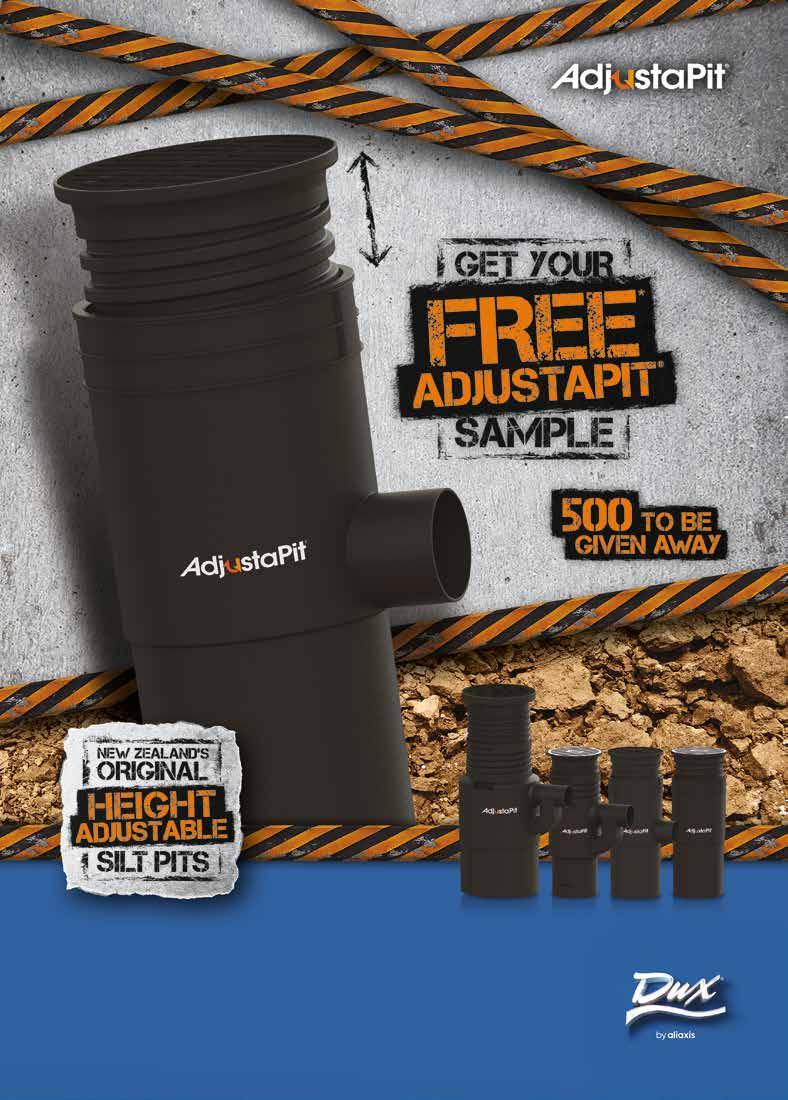“IT’S REWARDING WORK”
Emma de Salis on being an adult apprentice, a woman in the trades, and managing ADHD PAGE 70



Emma de Salis on being an adult apprentice, a woman in the trades, and managing ADHD PAGE 70


• K-VALVE IS THE SAME FITTED COST
• SAFER TESTING SYSTEMS
• ACCELERATED TESTING TIME IS REDUCED BY MORE THAN 90%
• REDUCED LOST TIME INJURIES
• NEVER LOSE THE PLUG DOWN THE DRAIN
• EASY TO USE
• ENGINEERED TEST PLUG FOR WATER AND AIR TESTING
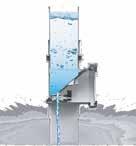
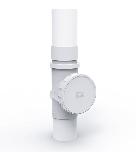
• AS/NZ APPROVED WATERMARK STANDARD


• AVAILABLE IN DWV UPVC 100MM STANDARD AND EXPANSION FORM

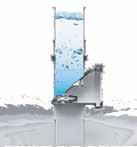
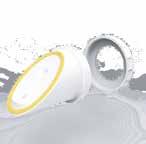
Volume 75, Number 4
MAGAZINE TEAM
CEO Greg Wallace
EDITOR
Beverly Sellers 0272 923 923 bsellers@masterplumbers.org.nz
PRINT Blue Star
81 The Esplanade, Petone Wellington 6141
DESIGN
SCG Senior Designer – Julian Pettitt
SCG Senior Account Director – LauraGrace McFarland scg.net.nz
SUBSCRIPTIONS
NZ Plumber is published six times a year by Master Plumbers, Gasfitters & Drainlayers NZ. Members and Certifying tradespeople receive all six editions. If you wish to opt out, please email bsellers@masterplumbers.org.nz
To order an annual subscription, go to www.masterplumbers.org.nz
MAILING LIST
For enquiries, or to update your details: bsellers@masterplumbers.org.nz
Non-Master Plumbers’ members with address detail changes should notify the PGD Board direct, giving their registration number here: registration@pgdb.co.nz
TO ADVERTISE advertising@masterplumbers.org.nz
If, like me, you feel a sense of helplessness with every newspaper story of wildfires, droughts and floods, I hope you’ll take some comfort from this edition’s Plumbing Innovation technical theme.
It’s refreshing to read about positive action being taken to develop and market bright new ideas for sustainable water and energy management for construction and infrastructure.
It’s not all doom and gloom. Clever people all around the world are finding solutions to prevent stormwater runoff ahead of extreme rainfall; to reduce hot shower energy use; to use biogas in our boilers; and to manufacture products with recycled plastic. Discover more about these exciting innovations for our industry, starting on page 50.
Survey responses also show consistent support for investing in our industry’s apprentice training regime to help grow the workforce. With a quarter of Certifying Plumbers, Gasfitters and Drainlayers aged 65 and over, it’s essential that we keep the apprentice pipeline flowing.
This edition, we feature award-winning adult apprentice Emma de Salis on our cover and in our article on page 70. Having held previous roles in property management and other trades, Emma has found her true calling with a career in plumbing. She talks to NZ Plumber about why this trade appeals and how she hasn’t let a diagnosis of ADHD hold her back.
NZ Plumber is the official magazine of Master Plumbers, Gasfitters & Drainlayers NZ Inc. Contact details for the Master Plumbers board, staff, branches and associations are available at www.masterplumbers.org.nz
©NZ Plumber 2013. Registered as a Newspaper, GPO, Wellington, ISSN 0111-4379. NZ Plumber is subject to copyright in its entirety. The contents may not be reproduced in any form, either in whole or in part, without written permission of the publisher. All rights reserved in material accepted for publication, unless initially specified otherwise. All letters and other material forwarded to the magazine will be assumed intended for publication unless clearly labelled ‘Not for Publication’. Views expressed in articles in NZ Plumber magazine are not necessarily those of Master Plumbers, Gasfitters & Drainlayers NZ Inc, or of the Editor. While every effort has been made to ensure the accuracy of the information included in this publication, the publisher and the Editor take no responsibility for errors or omissions or for any consequences of reliance on this information. Publication of advertising material implies no endorsement of either a product or service.
It’s also very promising to see all parliamentary parties showing their support for investment in renewable gas technology and infrastructure in our preelection survey on page 14.
With New Zealand’s first largescale food waste-to-bioenergy facility now up and running at Reporoa, and manufacturers developing biogas and hydrogen ready appliances, it will take government investment to make these renewable gases a reality for households and businesses around the motu.
Beverly Sellers Editor, NZ Plumber, bsellers@masterplumbers.org.nz

Our changing climate is calling for out-of-the box thinking on sustainable plumbing products and technologies.


84 Dodgy plumbing
Dodgy gas, plumbing & drainage—we’ve got the lot!
This magazine is subject to NZ Media Council procedures. A complaint must first be directed in writing, within one month of publication, to the editor’s email address. If not satisfied with the response, the complaint may be referred to the Media Council PO Box 10-879, The Terrace, Wellington 6143; info@mediacouncil.org.nz. Or use the online complaint form at www.mediacouncil.org.nz
Please include copies of the article and all correspondence with the publication.
Scan to read NZ Plumber online!


Having previously worked in property maintenance and management, Emma de Salis came to her plumbing apprenticeship at the
of 34—showing it's never too late to pick up a new career. Now in the third year of her apprenticeship, Emma is flying. In 2023, she has won a Plumbing World Scholarship awarded to Masterlink apprentices who are showing great promise. She is also the recipient of a Masterlink Outward Bound Scholarship, courtesy of Methven Caroma, and bravely agreed to be part of the Women and Diversity in Plumbing Discussion Panel at this year’s New Zealand Plumbing Conference. Meet Emma on page 70.
Cover photograph: Amy Fowler

Let’s hope we are over the worst of winter and starting to get some more settled weather, particularly for the East Cape and Auckland regions, which have experienced more than their fair share of rain over the past months.
With the run up to the 2023 Election, you’ll see on page 14 that Master Plumbers asked all the parliamentary parties six questions relating to our industry. This included gauging their support for renewable gases and self-certification for plumbing and drainlaying, and their commitment to plumbing product compliance, infrastructure investment, and our apprentice training regime.
Overall, we have been pleasantly surprised by the consistency of responses, which align with what is needed for the wider plumbing, gasfitting and drainlaying industry.
I accept that some of our industry will be questioning why these changes have been made, but a great deal of analysis goes into the process. The proposals were consulted on during 2022, and there is some rationale behind the final decisions made, including keeping our tamariki safe from hot water scalding.
When raising advocacy issues, we always want to provide solutions and we think we have general agreement across the parliamentary parties that our solutions will result in a stronger industry.
You will see from these responses that the political parties have differing priorities and timelines, but they do show that Master Plumbers’ advocacy focus has been extremely successful.
When raising advocacy issues, we always want to provide solutions and we think we have general agreement across the parliamentary parties that our solutions will result in a stronger industry, greater efficiencies and increased productivity.
You may also be aware that there are significant Building Code updates for the plumbing and drainlaying sector, which are outlined in our article on page 20.
One of the greatest risks for our industry is a lack of understanding of compliance requirements by both installers and suppliers when changes of this kind are made. Master Plumbers will ensure members are provided with full details of the changes and we are looking to incorporate a training roadshow across the country.
With Cyclone Gabrielle recovery work set to require additional plumbers, gasfitters and drainlayers in affected regions at a time when New Zealand is experiencing desperate skills shortages, a new digital campaign has been launched to attract skilled labour from overseas. Master Plumbers was involved in the campaign’s creation through our participation on the New Zealand Construction Industry Council, and we will be providing members with resources to help understand the overseas hiring process.
As NZ Plumber went to print, we were also looking forward to attending the 2023 Wellington Gold Awards as a finalist in the Team Gold category for best practice in HR and wellness programmes.
We are incredibly proud of the success of the HR and wellbeing programmes we have put in place for members and I’d like to thank the whole team for their commitment, particularly HR Manager Lisa Duston who runs our member HR Helpline and has driven the growth of our Wellbeing on Tap programme from the very start.
Greg Wallace, CEO Master Plumbers, Gasfitters & Drainlayers NZ

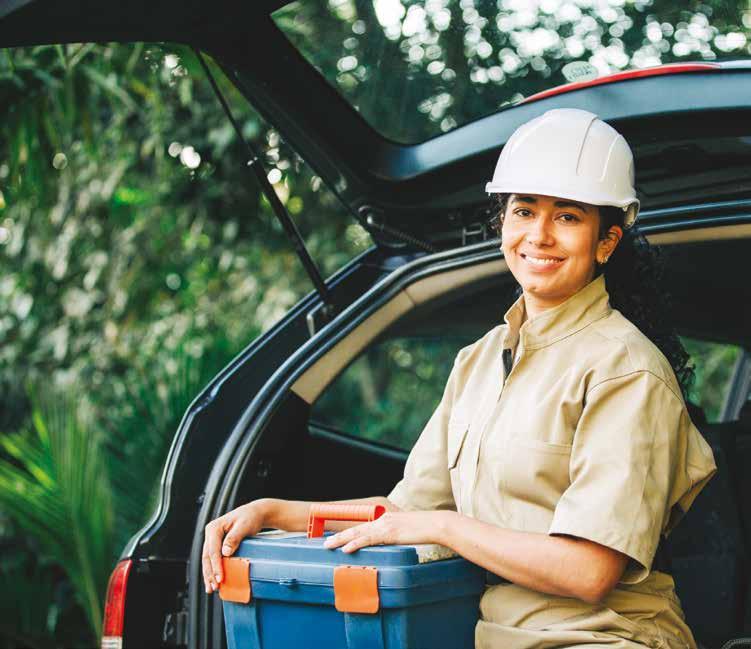

Manage your business like you mean business with one software for job quoting, scheduling, inventory tracking, invoicing, workflow management and more. Plus, meet the hardest working crew you’ll ever hire - with expert long-term support and coaching to help you build, repair and grow your business.
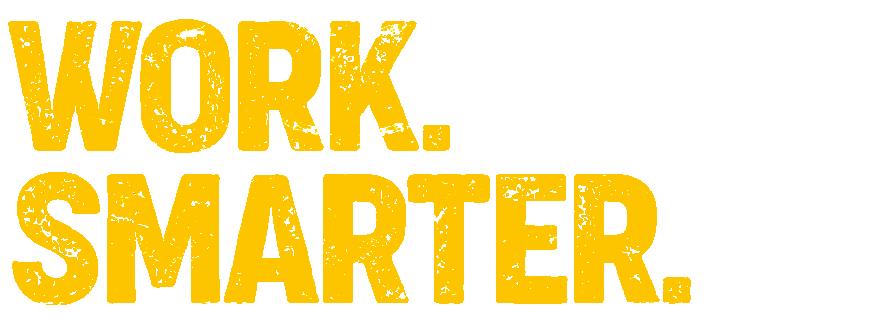
READY TO GET TO WORK?
simprogroup.com
START HERE

The new Recruitment Storyteller campaign is a public-private collaboration, led by ACE New Zealand and includes input from Master Plumbers through the New Zealand Construction Industry Council.

Videos, digital banners are social tiles promote Aotearoa New Zealand as a spectacular place to live and work, with rewarding roles in construction and one of the best lifestyles in the world.

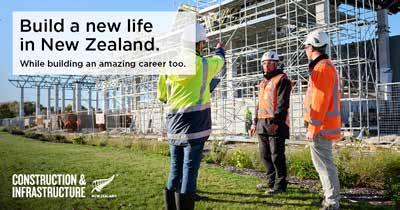

You can download the assets yourself for use in your own business. HainesAttract will also use the campaign assets to drive online traffic to a new website buildyourfuturenz.com, where jobs will be posted. If you have a preferred recruitment specialist, they can partner with HainesAttract on this initiative.
Go to www.nzstory.govt.nz/kopu/recruitmentstoryteller-construction-and-infrastructure-sector
From this November, Certifying exams will be offered on a regular basis via an online platform. This will allow practitioners who want to become registered as a Certifying Plumber, Gasfitter or Drainlayer to do so quicker, says the Plumbers, Gasfitters and Drainlayers Board (PGDB).
The three-hour exams will be delivered online by Aspeq Ltd and can be sat at Aspeq’s exam centres around the motu (see map), and by arrangement in some overseas locations.
The exam is part online, part paper based. The design questions will be completed on paper, and
GISBORNE
exam results will be available within 10 working days. Resources will be available in soft copy only, unless special conditions are approved.
The 60% pass mark and eligibility criteria will remain the same.
To book an exam: register with Aspeq Ltd at https://pgdb. aspeqexams.com/home download your exam eligibility report from your PGDB trade log-in and email it to info@aspeq.com after receiving confirmation from Aspeq, log on to your Aspeq account, book and pay for your exam.
Motor Vehicles Legislation Act is
Under new legislation that came into force on 7 June, vehicles with a portable toilet will no longer be able to be certified self-contained. Existing self-containment certification requirements (blue warrant) will be phased out during a transition period and eventually replaced with the new green warrant requirements. The Plumbers, Gasfitters and Drainlayers Board is the regulator of the self-contained vehicle regulatory system.
7 June 2023 Act in force
Only vehicles with a fixed toilet can be certified self-contained under existing requirements (blue warrants).
7 June 2023 – 7 June 2024
Vehicles with a portable toilet that are already certified self-contained can still freedom camp.
7 June 2023 – warrant expiry or 7 June 2025, whichever comes first (these dates vary for rental vehicles).
Mid-July 2023
7 December 2023
7 June 2024
7 December 2024
7 June 2025
New tiered infringement penalties in place ahead of FIFA Women’s World Cup.
6 months after Act in force
Vehicles can be certified self-contained under the new requirements (green warrants). These will remain valid for 4 years after certification. People/organisations can apply to PGDB to become certification authorities.
Register of self-contained vehicles set up to verify whether a vehicle is self-contained under new requirements.
12 months after Act in force
Self-containment certification can only be done by certification authorities under new green warrants.
18 months after Act in force
Rental vehicles must be certified under new requirements and display green warrant.
24 months after Act in force
All vehicles must be certified under new requirements and display green warrant.
Find out more about the changes at www.mbie.govt.nz
A draft of DR AS/NZS 2033:2023
– Installation of Polyethylene pipe systems is currently available for public comment.
The current version of this standard is referenced as a means of compliance with the Building Code for the installation of polyethylene pipe systems. This revision updates the document with respect to current practice and new materials. It is intended to address the installation
of polyolefin pipes and fittings for plumbing, industrial and irrigation applications. It is not intended to replace industry location-specific installation codes or regulations.
You can review the draft standard and submit comments on the Standards Australia website: www.standards.org.au (scroll down to Public Comment—you will need to log in). The closing date for comments is 11 September 2023.
Brendon Ross has been appointed as Hirepool Regional Manager Southern. Brendon has 23 years of expertise in management and operational expertise in the equipment hire sector. His most recent role as National Training Manager for Hirepool gives him excellent knowledge in fleet, systems and processes. In his new role, Brendon is overseeing operations, fostering customer relationships, and implementing strategies to enhance Hirepool’s market position in the South Island. Master Plumbers’ members enjoy a 20% discount on Hirepool hire equipment.

Rheem is thrilled to announce the appointment of new National Sales and Marketing Manager Duane Rice—a familiar face to many. Duane comes to Rheem with a wealth of experience in the industry after leaving school to become a plumbing apprentice over 30 years ago. Duane is excited to be part of the Rheem team and looking forward to catching up with everyone at events nationwide.
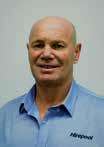
Hastings District Council commissioned an independent study by Stantec Consulting, released in June, which has found the reason for the high failure rate of LCPUs in certain parts of Hastings was that water from bores supplying these areas had lower alkalinity and low dissolved organic carbon characteristics— factors associated with copper pitting. The report cited chlorination as an important compounding factor and recommended
the council add food grade phosphate— phosphoric acid or sodium silicate—to the water supply to combat copper corrosion.

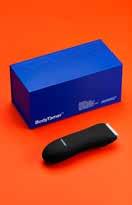
Master Plumbers expects that the issues identified in Hastings will be replicated in other parts of the country where water cylinders have failed. And there may be more problems coming down the line as more councils try to combat E.coli by adding chlorine to their water supplies. In an effort to find out who actually
determines what goes in our water and what their responsibilities are, Master Plumbers approached Taumata Arowai—the new water services regulator for New Zealand.
“We were disappointed to discover the low requirements and transparency for reporting requirements for regional water quality,” says CEO Greg Wallace. “There’s certainly nothing readily available to the public. Councils are only expected to provide water quality reports if they exceed maximum acceptable values.
“We need greater transparency when it comes to water quality reporting. Councils must make regular reports available to us all.”
Jeremy Wells, Matt Heath and the rest of the Radio Hauraki team got behind Bowel Cancer Awareness Month in June by running a 12hour broadcast from the bog at their local pub, The Empire Tavern. ‘Day in the Loo’, as they called it, was “all in the name of raising a crap load of awareness and a sh*t load of cash for Bowel Cancer New Zealand”. Guests included comedian and Alternative Commentary Collective host Dai Henwood, who recently opened up about living with incurable stage four bowel cancer. Plumbing World came to the party, supplying the toilets to seat hosts and guests on the stage at the tavern. By the next day, the initiative had raised $11,000. Radio Hauraki was also pointing people to giveshitforgood.com where you can purchase a ceramic poo in one of six limited-edition colours, with all proceeds going to Bowel Cancer NZ. Alternatively, donations are always welcome at www.bowelcancernz.org.nz
Auckland Council is trialling an electric digger on its stormwater maintenance operations—a first in the Southern Hemisphere. According to the council, CO2 from diesel trucks and diggers is one of the biggest sources of emissions from stormwater maintenance. The little red digger is proving a success. Apart from reducing CO2, initial trials show it is less noisy than a diesel engine, has comparable power, and is perfect for tunnelling, as it can manoeuvre in tight spaces and without generating air pollution. Testing continues on its battery life capability and to see how it handles different soil types, depths and density.
Plumber Nik McIntosh is known to many in the industry for his Trade Lab initiative, offering refresher courses for the plumbing, gasfitting and drainlaying registration exams. Turns out, Nik has a sideline: selling premium facial and body hair grooming tools under his TAME™ brand. The product range is aimed at giving both men and women flexible options to present themselves in a way that makes them feel confident. Find TAME products at tamegrooming.com

Stu Watts (aka half of no-holds-barred couple Amy and Stu) heads for the trade section of his local Plumbing World and takes us through the many benefits of being an NZPM shareholder.

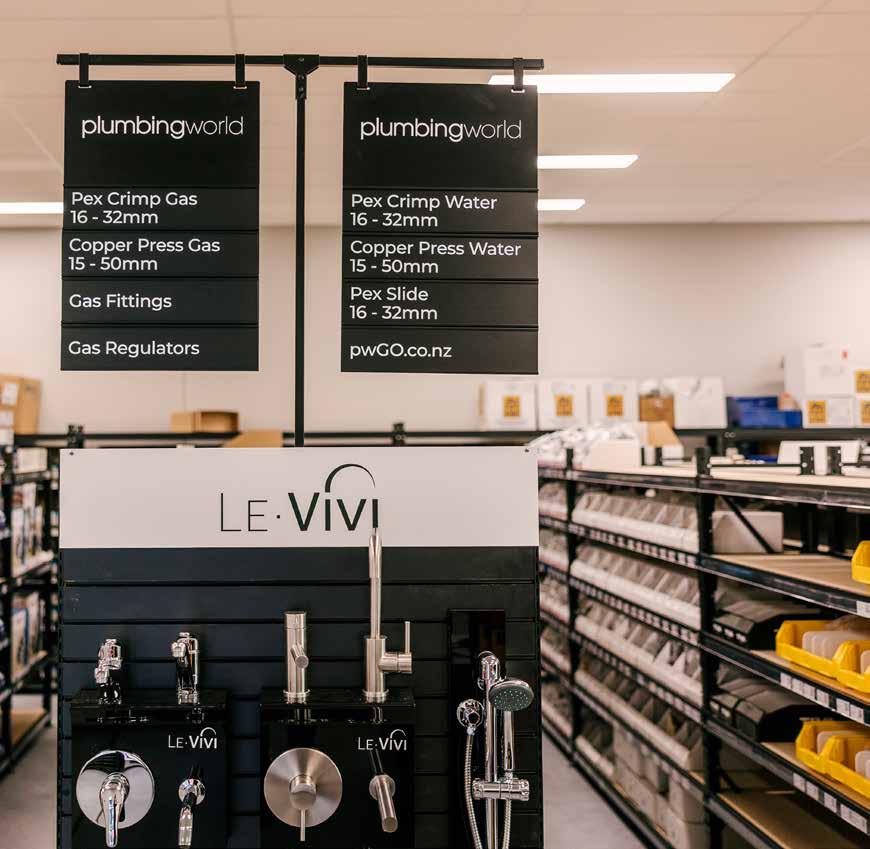
Scan for more
For almost 60 years, Plumbing World has been delivering the goods and guidance you need to create inspirational spaces. Now we’ve taken things a step further, with Plumbing World Helps. Stu has been working with us to create some useful videos for you and your customers.
Scan the QR code to watch the full video series at Plumbing World Helps — for all the advice, tips and insights you need on your next project.
Watch the full video series at pwhelps.co.nz
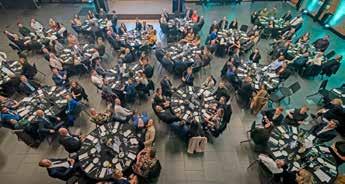

Backflow
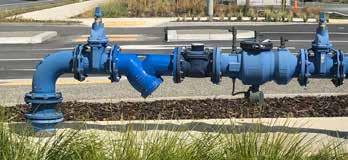
26 SEPT – LOWER HUTT (FULL COURSE)

7 NOV – AUCKLAND (FULL COURSE)
10 NOV – AUCKLAND (REFRESHER) nzetc.wsp.com/w/upcoming/
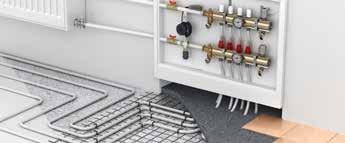
For all upcoming Master Plumbers training and events, go to www.masterplumbers.org.nz/events


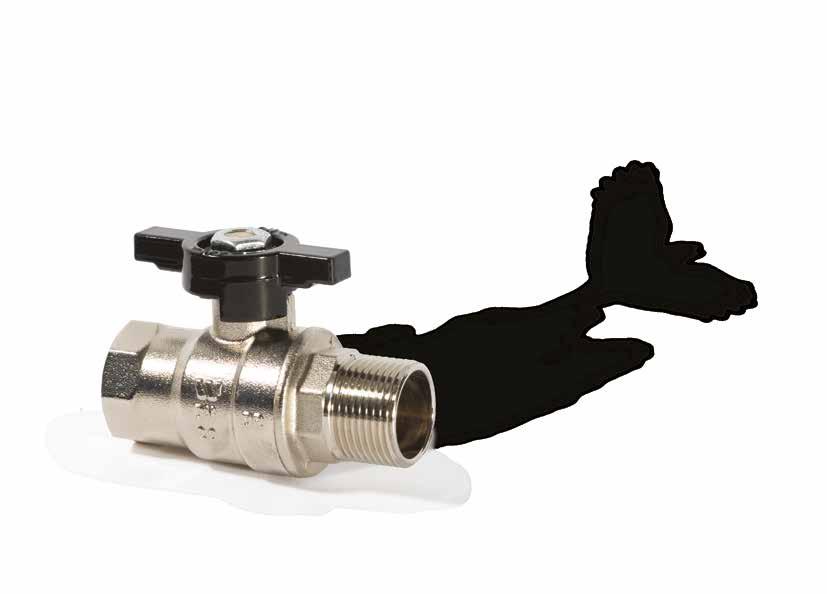

Master Plumbers surveyed all the parliamentary parties ahead of the 2023 election to gauge their position on some of the burning issues for our industry.
NZ Plumber reports on their responses, which were received between mid-June and early July.

Do you support investment in renewable gas technology and infrastructure, such as Biogas and Hydrogen?
In collaboration with the industry, we are committed to implementing realistic, but ambitious, pathways for the fossil gas sector to decarbonise in line with the first three emissions budgets out to 2035, while signalling the longer-term direction out to 2050.
We will deliver the Gas Transition Plan by the end of 2023 to provide certainty for the gas industry, and will shortly release our interim Hydrogen Roadmap, which will provide a blueprint for the development of a hydrogen industry in New Zealand. We’re also partnering with businesses to support the uptake of renewable gases, such as our $100 million consumption subsidy we provided in Budget 2023. We’re committed to continue to work with you to ensure that renewable gas will be part of our energy strategy, and will look to implement practical training and robust standards for gasfitters in the use of renewable gases.
With any transition, it’s vital to give the impacted industries sufficient time to evolve, and confidence that the government will support that journey. We’re focused on practical emissions reduction outcomes and see renewable gas as an important opportunity in that space.
Do you support self-certification for plumbers and drainlayers?
Labour recognises that selfcertification for plumbers and drainlayers will help to increase efficiency. A recent review of the Plumbers, Gasfitters and Drainlayers Act found there are gaps in the existing system that will need to be addressed first, including updating the licensing system to ensure that certifiers have the required skills and implementing a credible auditing regime to monitor compliance and detect noncompliant work. However, I’m pleased that a pilot programme for remote inspection is currently underway in Auckland and Canterbury.
This should occur within 12 months. It just makes sense and there is already a similar system (gasfitting) that it could be modelled off—it simply needs a government focused on improving outcomes, which we will do. Inspections are one of the key weaknesses in the current system, leading to unnecessary delays and cost increases. Councils should also be accepting virtual/ digital inspections as this would contribute to significant efficiency gains.
Do you support the establishment of a third-party verification system, such as the Australian WaterMark, to better audit the lead levels of tapware products available for sale in New Zealand?
Yes, in principle. The Ministry of Business, Innovation and Employment made changes to the Building Code in 2022 and we are pleased to see New Zealand move to lead-free plumbing products in the interests of public health.
We want MBIE to continue to work with counterparts in Australia and Taumata Arowai, the Water Services Regulator, to support the implementation of the change, including consideration of whether a third-party verification regime is the best way to ensure we make progress on our lead-free targets.
It’s vital that we provide certainty that our products are fit for purpose and while I support the requirement to be lead free by September 2025, I don’t have confidence that we have an adequate system to ensure this occurs.
I’m open to potential solutions, which may be a third-party verification system, but would want to ensure that it doesn’t end up morphing into another bureaucratic process that adds more cost than the value it brings. This should be implemented to coincide with the September 2025 timeframe.
These responses were provided on behalf of the ACT Party
ACT support all private investment in renewable energy. The driver should be the Emissions Trading Scheme, in which users of fossil fuels are incentivised to move to renewable energy.
There is a cap on CO2 emissions, and users are incentivised to adopt new types of technologies.
These responses were provided on behalf of the Green Party
Yes, provided environmental standards are robust. The Green Party supports the development and use of bioenergy which delivers strong climate benefits without unacceptable cultural, land use and ecological impacts. For example, community scaled bioenergy production for local and domestic needs, biogas from animal and plant wastes on farms and energy generation from landfill gas until landfills are phased out.
We oppose the production of hydrogen from fossil fuels and will seek to focus research on green hydrogen to use in hard-to-abate applications which are reliant on fossil fuels, such as steel and potentially aviation, heavy transport and shipping.
ACT appreciates how poor regulation and unnecessary red tape is a significant burden for many sectors. ACT is still to determine its policy in detail, but ACT supports the principle that the regulator sets outcomes-based standards, and that these are met through private or third-party verification. ACT is still to determine its policy in detail, but in principle ACT supports private or third-party verification.
We would be open to changes to the regulatory system to ensure that it is fit for purpose.
We do not have specific policy on this but will work with the sector to ensure that the regulatory system is well set up for a self-certification regime. We recognise the vital role that plumbing and drainlaying plays in the construction sector and we know that both safety and efficiency must be upheld in the consenting system, especially as we work to address the housing crisis.
ACT supports third-party verification and harmonisation of standards with Australia.
This is something that we have heard from Master Plumbers and raised in Parliament.
Note: Master Plumbers also sought feedback from Te Pāti Māori but no response was received.
Do you support greater investment in nationwide plumbing and drainage infrastructure to better mitigate the incidence of flooding?
Labour is committed to addressing the infrastructure deficit. That’s why we have invested $45 billion in infrastructure projects over the past five years and have now committed in this year’s budget to invest a further $71 billion over the next five years. We also know we need a workforce to deliver this.
On top of the introduction of free trades training and the Apprenticeship Boost programme under Labour, we are also providing a streamlined pathway to residence for those on the immigration Green List, which includes plumbers.
We definitely support greater investment in plumbing and drainage infrastructure. The recent flood events have highlighted our lack of infrastructure resilience as a country and this must be addressed (across a wide range of infrastructure types).
I certainly support delivering more trained workers into the industry. This must be a combination of locally trained Kiwi workers, alongside talented migrants who are able to fill the immediate need.
The Government has been too slow to respond to the workforce demands in the industry, particularly in relation to our immigration settings. We’re competing in a global marketplace and, currently, we’re not nearly as attractive as other nations due to our cumbersome immigration process.
National will fix this and ensure we’re sending clear signals that NZ is open for business and actively seeking to fill the shortages that exist across many industries.
Do you support investment in the apprentice training regime?
Under Labour, we’ve supported more than 190,000 New Zealanders through free trades training and apprenticeships, with the Apprenticeship Boost Initiative programme paying more than 57,000 apprentices.
Among others, that means more plumbers, drainlayers and gasfitters. If re-elected, Labour will make the Apprenticeship Boost programme permanent. We are the party of apprenticeships, and this commitment will give confidence to many employers to keep hiring.
We must continue to train more apprentices in NZ. Developing our own talent consistently over time is vital.
Unfortunately, the recent changes by the Government to merge the tertiary education sector have not delivered improved outcomes.
There simply aren’t enough places on the block courses for the number of apprentices we currently have, which is resulting in the apprentices taking longer than normal to become qualified, with increasing numbers simply pulling out.
National is committed to delivering greater efficiencies across the tertiary education sector to ensure we’re developing the workforce that we need.
Are there any other initiatives you are proposing that will benefit our sector or the wider construction industry?
I’ve come to politics from a business background so my main focus is on how we can improve sector efficiency. There are so many amazing businesses and individuals achieving fantastic things in our industry, but they could do even more if we stopped suffocating them with unnecessary red tape and compliance.
There are a number of aspects we can improve in the consenting and inspections process.
I’ve also looked at our supply chain challenges and see scope for improving access to a broader range of products, which will help to reduce cost and speed up the supply chain.
These responses were provided on behalf of the ACT Party
ACT recognises that there has been long-term underinvestment in critical infrastructure by local government. ACT will pass half the GST from residential construction onto the relevant local government authority for the purpose of funding infrastructure, so more building will partially fund its own infrastructure investment. ACT is still developing its local government policy.
These responses were provided on behalf of the Green Party
The need to improve and invest in stormwater and wastewater infrastructure, including through better land use planning and green infrastructure (swales, rain gardens, permeable paving etc) that eases the pressure on stormwater infrastructure during heavy rainfall events has been an issue that the Green Party has been pushing for action on.
Te Pūkenga, and the RoVE generally, has been a disaster. ACT is still developing its vocational training policy, but in general supports industry-led industry training organisations that develop qualification standards and verify workers are meeting those, and that apprenticeships receive equitable funding.
We welcome the Government’s recommitment to funding the Apprenticeship Boost and we support any expansion of apprenticeship support. We will also ensure that where plumbers and gasfitters are self-employed that they can access mentoring and networking programmes as well as start up support.
We will work towards a fee free public tertiary education system.
We will review current funding to tertiary institutions to ensure that subsidies are sufficient to meet real costs and where funding needs to be prioritised, prioritise funding of the public education sector like Te Pūkenga.
ACT will replace the RMA/ Natural and Built Environment Bill with a new environmental management and urban planning system that supports development and construction without the current bureaucratic and legal barriers. For plumbers, this will mean significantly less red tape.
The climate and ecological challenges we are facing globally and locally mean that we need to urgently transform our building and construction sector to lift energy and overall environmental performance. Government leadership working with the sector to lift energy performance, reduce embedded and operational greenhouse emissions and reduce waste going to landfill is a priority for the Green Party. There is an opportunity to reduce costs and improve performance with greater support for both onsite and off-site manufacturing, approving higher performance products, and utilising government procurement to achieve scale which brings down price.
Note: Master Plumbers also sought feedback from Te Pāti Māori but no response was received.
Decisions have been made on all proposed amendments to plumbing and drainage acceptable solutions and verification methods, with the new versions to be published this November. Read about the key changes here.
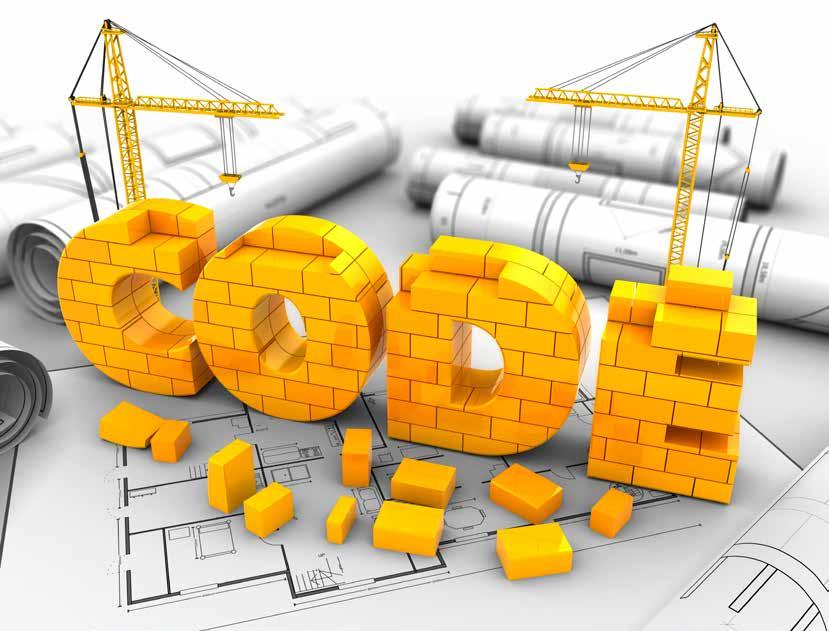
Changes to the Building Code acceptable solutions and verification methods for plumbing and drainage work will be published this November, so make sure you know what to expect.
The focus is on improvements to the means of complying with Building Code clauses:
E1 Surface Water
G12 Water Supplies
G13 Foul Water.
The Ministry of Business, Innovation and Employment (MBIE) received a total of 111 submissions on its 2022 Building Code update consultation and says there were high levels of support for the changes.
“Key to these amendments is the adoption of the 2021 versions of the AS/NZS 3500 plumbing and drainage standards,” says Ross Wakefield, Senior Advisor, Plumbing & Hydraulic Services, Building Performance & Engineering at MBIE. “The 2021 editions of the AS/NZS 3500 Plumbing and drainage standards will be cited as acceptable solutions for complying with Building Code clauses E1 Surface Water, G12 Water Supplies and G13 Foul Water.”
As part of citing the new versions of the AS/NZS 3500 standards, a new acceptable solution will be issued: G12/AS3. G12/AS3 will cite AS/NZS 3500:2021 Part 1 Water services and Part 4 Heated water services. This will support the use of these standards by practitioners and provide consistency between the status of these standards under the Building Code.
MBIE will provide supporting information and educational resources to help all those using the new documents following their release. There will be a one-year transition period for these changes from the date of publication, ending in November 2024, except for a specific provision for lead in plumbing products. At the end of the transition period, the previous versions of the acceptable solutions and standards will no longer be deemed to comply with the Building Code.
The lead in plumbing product changes will have a longer transition period to give manufacturers and suppliers additional time to implement the required change to the affected plumbing products.
As mentioned above, MBIE will be citing the latest 2021 versions of the AS/NZS 3500 standards in the updated acceptable solutions E1/AS2 and G13/AS3 and in the new acceptable solution G12/AS3. This will include citing amendment 1 to AS/NZS 3500.1:2021. This amendment reinstates backflow prevention device details that were erroneously removed during the publication process.
MBIE will also be updating information on the building.govt.nz website regarding requirements for drainage junctions installed at grade to be elevated at an incline of not less than 15° above the horizontal to reduce the likelihood of drain blockages to reflect the revised version of AS/NZS 3500.2:2021.
What’s changing?
G12/AS1 will be updated to limit the maximum allowable content of lead permitted in certain plumbing products. The amended document will limit the maximum lead content of any product that
contains copper alloys, intended for use in contact with potable water for human consumption. Any such product will have to have a weighted average lead content of no more than 0.25%. This includes pipe fittings, valves, taps, mixers, water heaters and water meters.
G12/AS1 will also require all copper alloy water supply system components to be dezincification resistant.
The transition period for the lead in plumbing products provisions is scheduled to end on 1 September 2025.
MBIE indicated in its consultation proposal the intent to align the lead in plumbing products transition period for New Zealand with the time when equivalent requirements will come into force in Australia.
The transition period end date for the introduction of equivalent requirements in Australia has recently been extended by 8 months, to 1 May 2026. MBIE are currently considering the implications of re-aligning the transition period end date for New Zealand with Australia.
What’s changing?
Acceptable Solution G12/AS1 is being amended to reduce the maximum delivery temperature of hot water at the tap. The maximum allowable temperature of hot water delivered to new plumbing fixtures used for personal hygiene will be reduced from 55°C to 50°C for most buildings to reduce the risk of scalding injuries. These changes will apply to sanitary fixtures such as hand basins, baths and showers. The changes will not apply to kitchen sinks or laundries, as these are not considered sanitary fixtures for personal hygiene.
The maximum hot water delivery temperature will remain at 45°C for early childhood centres, schools, aged care facilities, rest homes, retirements homes, hospitals and institutions for people with intellectual or physical disabilities.
Additional temperature control devices will also be introduced into G12/AS1 to provide more ways for plumbers to limit the temperature of hot water delivered to sanitary fixtures used for personal hygiene and improve alignment with AS/NZS 3500.4:2021 Heated water services
Whilst the reduced maximum delivery temperature will not apply to kitchen sinks, the provision of 50°C hot water to domestic kitchen sinks is considered by MBIE to be adequate for hand-washing dishes.
Please note: This change is about the hot water delivery temperature. It will not affect the minimum temperature for hot water storage and will not increase the risk of legionella bacteria growth in hot water systems.
“G12/AS1 will be updated to limit the maximum lead content of any product that contains copper alloys, intended for use in contact with potable water for human consumption.”
“The maximum allowable temperature of hot water delivered to new plumbing fixtures used for personal hygiene will be reduced from 55°C to 50°C for most buildings.”
Six key changes will improve clarity around when backflow prevention is required, what type of backflow prevention devices are suitable, and how these devices should be installed and tested.
G12/AS1 describes three cross connection hazard rating categories (High, Medium and Low) and provides examples of various building systems which fall into each category. This update will include the following additional cross-connection hazard rating examples:
High Hazard
Bidets and douche seats
Handheld bidet hoses and WC trigger sprays
Connections for portable and mobile tankers
Healthcare waste disposal equipment
Hose taps associated with ‘soil waste dump points’
Medium Hazard
Treated greywater
Air handling unit humidifiers without chemicals
Swimming pools, spas and fountains example to be updated to exclude those filled by a hose tap in conjunction with household units. This will support the provision of hose connection vacuum breakers as an acceptable backflow prevention device for filling these
Carbonated drink dispenser note added to clarify that pipework installed downstream of the backflow prevention device should not be made of copper and not be affected by carbon dioxide gas.
Low Hazard
Drinking fountains and bottle fillers
Hose taps, other than those associated with medium or high hazard situations.
This change will ensure those constructing new buildings that pose a heightened risk of water supply contamination provide containment backflow protection to comply with the Building Code.
Containment backflow protection will be defined as backflow protection installed adjacent to the point of supply to protect a water main from any potential contamination risk posed by backflow from a premises. Containment backflow protection is also known as boundary backflow protection. These provisions will only apply where containment backflow protection is not provided by the network utility operator and will not apply to premises containing only household units.
Containment backflow prevention devices installed to comply with the Building Code need to be installed by an authorised plumber. They also need to be included on the buildings
Decisions have been made on the plumbing and drainage Building Code update consultation, with new versions of acceptable solutions and verification documents to be published this November.
compliance schedule and need to be tested annually by an independently qualified person as part of the process for issuing an annual building warrant of fitness.

The updated requirements for the installation of backflow prevention devices will clarify that: devices must be attached only after the pipework has been flushed devices must be fitted with connections which allow for the easy removal and replacement of the device devices must be adequately supported devices must be installed with isolation valves in order to allow independently qualified persons to test these devices annually reduced pressure zone devices must be installed with adequate drainage provisions where installed within a building. Commentary will also be provided around what constitutes an accessible position for backflow prevention devices to be installed. This clarification is intended to reduce the likelihood of devices being installed in locations that may compromise the health and safety of the independently qualified persons who are required to test these devices annually.
Updated requirements for hose taps and hose connection vacuum breakers in G12/AS1 will clarify that:
Hose taps, other than those associated with medium or high hazard situations, are considered to pose a low cross connection hazard
Hose taps connected to the potable water supply system will require backflow protection, and the minimum acceptable type of backflow prevention device will be a permanently attached hose connection vacuum breaker
“Changes will improve clarity around when backflow prevention is required, what type of backflow prevention devices are suitable, and how these devices should be installed and tested.”
Hose connection vacuum breakers are only suitable for low cross connection hazard protection against back-siphonage Hose connection vacuum breakers can be tested in accordance with the method outlined in the 2019 NZ backflow testing standard. Installation requirements for hose connection vacuum breakers will also be provided to align with similar requirements in AS/NZS 3500.1: 2021.
5. Other amendments to G12/AS1 as part of the protection of potable water changes include: Citing the latest backflow prevention device testing and manufacturing standards
Updating pipework identification and marking requirements. Providing new or updated definitions for:
• Drinking water standards
• Containment backflow protection
• Point of supply
• Potable water.
Please note: G12/AS1 will be updated to cite the 2022 edition of backflow prevention device manufacturing standard AS/NZS 2845.1. The 2022 edition was revised to include changes to detector check assemblies that improve performance, resulting in less head loss in fire installations to provide greater water pressure to fight fires.
6. Referencing the AS/NZS 3500 cross-connection control and backflow prevention
As part of referencing the latest 2021 versions of the AS/NZS 3500 standards, the cross-connection control and backflow prevention provisions in AS/NZS 3500.1:2021 Water services will be referenced as another means of complying with the Building Code in the new acceptable solution G12/AS3. These provisions have been updated to better align with G12/AS1 and will provide designers and installers with additional compliance options.
G12/AS1 will be updated to improve existing provisions and provide more ways for building water supply systems to comply with the Building Code.
These changes include amendments to G12/AS1 for:
Expansion vessels – expansion vessels will be introduced as a simple-to-install alternative to cold water expansion valves for managing thermal expansion within storage water heating systems
Seismic restraint of water heaters – additional options for seismic restraint straps to be located in positions where they do not clash with other critical cylinder features will be provided
Accessible taps – requirements for accessible taps which support the provision of sensor taps for use by people with disabilities will be clarified
Wet-back water heaters – additional design and installation provisions for wet-back water heating systems will be cited
UV resistant pipework insulation material – insulation on water pipes will be required to be UV resistant or suitably protected when installed in direct sunlight
Cleaning and disinfection of water storage tanks – provisions for the cleaning and disinfection of potable water tanks within AS/NZS 3500.1 will be cross referenced
Water supply pipework installation standards – suitable installation standards for PVC-U, copper and polyethylene pipework will be cited
Minimum and maximum water pressures – minimum and maximum water pressures at sanitary fixtures and appliances will be specified to align with AS/NZS 3500
Relief valve drains – examples of acceptable hot water cylinder relief valve drain discharge locations will be provided
Minimum pipework cover below ground – the minimum cover of water supply pipes below gardens, lawns, paths paving for pedestrian use or other areas not subjected to vehicular traffic will be reduced to 300mm
Flushing of water supply systems – newly installed and altered water supply systems will be required to be flushed at each discharge point to remove any dirty water or debris on completion of construction
Unintentional heating of cold water – water supply systems will be required to be installed in a manner that avoids the unintentional heating of cold water.
Verification Method G12/VM1 will also be updated to introduce a method for use by plumbing system designers to calculate design flow rates for sizing water supply pipework in multiple types of buildings.
The latest manufacturing standards for plumbing and drainage system components will be cited in E1/AS1, G12/AS1, G12/AS2, G13/AS1 and G13/AS2.
These changes form part of regular maintenance updates to address outdated product manufacturing standard citations. G12/AS1 will also be amended to:
Remove galvanised steel as an acceptable material for potable hot and cold water pipework systems as it is not considered fit for purpose.
Cite the latest 2018 version of the plumbing product testing standard AS/NZS 4020 to make it easier for accredited test laboratories to verify that plumbing products in contact with drinking water are safe to use.
Include an informative comment indicating that products that have been certified and marked in accordance with the requirements of the Australian WaterMark Certification Scheme may be verified as satisfying the relevant performance requirements of the Building Code.
Update pipe material tables to include additional acceptable materials for sanitary plumbing and drainage systems and cite the relevant standards for their manufacturing and installation.
Two guidance documents available on the building.govt.nz website will also be revised to reflect the revised list of standards. They are:
Evaluation of pipe suitability for hot and cold water services
Copper water pipe and fittings
“These changes address outdated product manufacturing standard citations.”
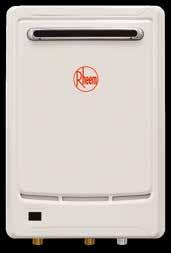

With 50°C soon to become the new norm for hot water delivered at tapware outlets in personal hygiene fixtures, there will be many customers who still want hot water delivered at temperatures at the current 55°C, or above, in their kitchens and laundry—and this is understandable.
When the Building Code updates come into effect, customers wanting a continuous flow gas water heater will have two options:
1. Install a gas hot water heater that adheres to the updated acceptable solution G12/AS1, and have 50°C hot water delivered throughout the building, including kitchen and laundry (see Diagram 1).
2. A gas hot water heater that can be set to temperatures exceeding 50°C for kitchens and laundries will comply with the updated G12/AS1 prevention of scalding provisions if installed with a tempering valve set to deliver hot water at no more than 50°C on the pipework that supplies hot water to sanitary fixtures used for personal hygiene (see Diagram 2)

If option 1 is chosen, the customer will simply need to be made aware that they will only have 50°C hot water delivered throughout their house. If option 2 is chosen, they will have temperatures of 50°C hot water delivered to their taps in the bathroom and ensuites (if applicable), and will also be able to have temps >50°C hot water delivered to the taps in their kitchen and laundry. However, Option 2 will also come with the extra cost of the tempering valve and installation.
It’s worth noting that all appliance manufacturers have 12 months to comply, which takes us up to the end of October 2024, so there is some breathing room before these changes will be reflected in market.
Tell your customers you meet the standard
New Zealand is introducing new standards for lead in its drinking water. Starting in September 2025, the new regulations proposed by MBIE will limit the lead content in plumbing products to a weighted average of no more than 0.25%.
Cimberio ball valves, with their distinctive green handles, are lead-free* and DZR

Cimberio lets you meet tomorrow’ s standards, today. And, tell your customers about it. For a top quality, lead-free* ball valve you can rely on, choose the green product with the green handle from Cimberio.
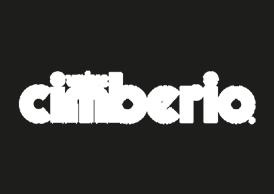
PLATINUM PARTNERS





Master Plumbers, Gasfitters & Drainlayers NZ thanks the following Partners for their support:





GOLD PARTNERS ®
SILVER PARTNERS
Show clients you represent excellence by using the Master Plumbers brand in your business.
The Master Plumbers brand always scores highest on the list of reasons to be a member in our annual member survey. No surprises there, as it’s the quality mark—a way of instantly showing clients your business is professional and upholds high standards.
There are many ways to display the brand in your business, including:
Communications and Marketing Download Master Plumbers, Master Drainlayers and Master Gasfitters logos for all your communication and marketing needs
Vehicles Order free Master Plumbers, Master Drainlayers and Master Gasfitters decals for your work vehicles

Uniforms Purchase a range of pre-branded items at competitive pricing through the Master Plumbers uniform portal
Quotes and Invoices Download and attach the Master Plumbers Guarantee fact sheet to your estimates, quotes and invoices.
Members have full access to the Master Plumbers brand in the log-in area at www.masterplumbers.org.nz
It was great to catch up with MATES in Construction representatives at the recent PGDB and Mico CPD Training Roadshow in Christchurch. This is the first year MATES have joined the CPD roadshow and Master Plumbers is thrilled they are here to assist the plumbing, gasfitting and drainlaying sector in the mental health and wellbeing space.
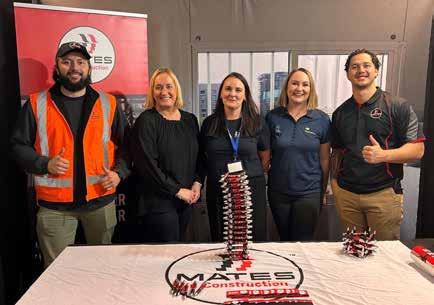
Master Plumbers has partnered with MATES to show our support for the amazing work they do around suicide prevention in the construction industry. The

industry is losing nearly one person every week to suicide and 98 percent of those we lose are men. We encourage all our member businesses to get involved with MATES training to learn how to identify those at risk, help keep them safe, and link them to professional support.
Would you like MATES training at your business or local Master Plumbers branch? Contact Master Plumbers HR Manager Lisa Duston: lduston@masterplumbers.org.nz
It’s been a busy time for advocacy projects at Master Plumbers. Consultations we’ve provided feedback on in recent months include:
MBIE – consultation on the building consent system
Climate Change Commission | He Pou a Rangi –2023 draft advice to inform the strategic direction of the Government’s second emissions reduction plan
MBIE – Exposure draft consultation on selfcontainment technical requirements
WorkSafe – proposals for a safe work instrument relating to valve inlet connections of LPG regulators
Taumata Arowai – engagement on lead levels in water supply network.
Options Paper: Review of the Building Consent System

Building system reform
June 2023
PGDB Chief Executive Aleyna Hall (centre) with Master Plumbers and Masterlink team members Lisa Duston (left) and Holly Timms and MATES representatives Nathan Tairea (far left) and Izak Clarke (far right).It’s been awesome to see so many employees and apprentices from Master Plumbers member businesses taking part in the 2023 Plumbing World Young Plumber of the Year Competition. The branch qualifiers are now complete, with winners and wildcards heading for the eight regional finals, which start on 19 September.
Among the branch qualifiers are Lauren Phillips of Baxter & Nelson Plumbers in Invercargill, Ben Howie of Foleys Plumbing in Queenstown, Tom Mulqueen of Foleys Plumbing in Wanaka, Akida Shimamoto of HiFlo Plumbing in Oamaru and Nikita Porthouse of Hutt Gas & Plumbing in Lower Hutt. You’re doing us proud!
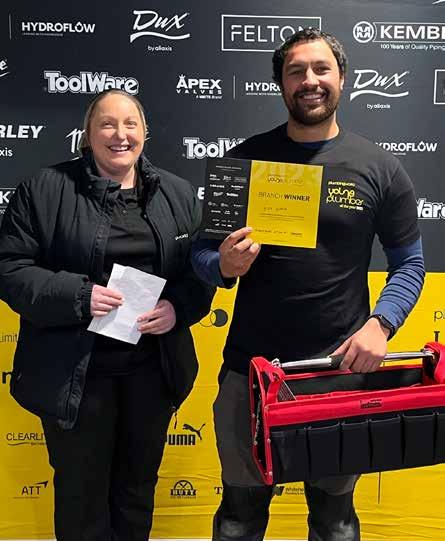
The national finals will be held on 15 November at Claudelands in Hamilton.
Master Plumbers and Masterlink are a Gold Sponsor of the competition, which
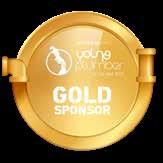
showcases plumbing as a career and attracts new people to the trade.
“The opportunity for Kiwis to build a fantastic career in the trades has never been better,” says Plumbing World CEO Rob Kidd. “We need to fill the pipeline with a high calibre of tradespeople who can contribute to the country’s economy and address our industry’s skills shortage.”

Grayson Allen has 32 years’ experience in the plumbing, gasfitting, drainage, solar and central heating industry.
Grayson and wife Cherie established Peak Plumbing and Gas Ltd in 2006 in Hawkes Bay, where Grayson has been an active member and Past President of the Hawkes Bay Master Plumbers Association since 1998.
Peak Plumbing and Gas are huge advocates for apprentice training and providing active pathways for staff to grow within the company. The ability to share knowledge and staff amongst the Master Plumbers’ network is a huge asset to the industry.
Grayson says it is a pleasure to serve on the Board with a huge bank of knowledge and experience—and he values sharing his own knowledge and experience with the industry he loves. It is fantastic to be able to ask for advice and know there is a huge range of experience in the membership.
Grayson is also on the Board of Trustees for Te Kura o Kimi Ora in Flaxmere, Hastings, which adds valuable insight and skills with regards to governance and community involvement.
What does your role entail?
My role is very broad and includes organising the NZ Plumbing Conference, helping with advertising for NZ Plumber magazine, liaising with Business Partners and legal work.
NAME: Fleur Nicholas
ROLE:
Event and Relationship ManagerWhat part of your role do you most enjoy?
I love the variety—no two days are the same. Organising our conference is a highlight. It is always fantastic to bring our members and Business Partners together for three days of learning, networking and fun!
Why Master Plumbers and the plumbing industry?
Master Plumbers has a fabulous team, who work together to support our members, Business Partners, and Masterlink apprentices and hosts. The PGD industry is so important, and I really enjoy being part of it.
What people do you enjoy being around?
Positive people who like keeping fit and active.
Who inspires you?
Young people who are working hard and succeeding in their chosen field.
What’s your happy place?
A warm sunny day at the beach with perfect waves for boogie boarding.
If you could invite any famous person round, who would it be?
Billy Joel!
What’s a perfect weekend?
Sunshine, exercise and catching up with family and friends.
What’s something you think everyone should try at least once? Travel around the East Coast from Gisborne to Opotiki on SH35. It’s a beautiful part of NZ with fantastic beaches and amazing scenery.
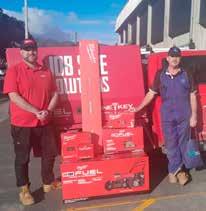
The first, second and third prize winners of Milwaukee Prize Packs to celebrate World Plumbing Day have now all received their awesome goodies. Congrats to:
1st prize winner: $4,000 Milwaukee
Prize Pack – Terry Bircham of TJ
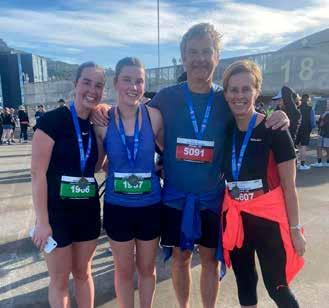
Bircham Plumbing in Lower Hutt
2nd prize winner: $3,000 Milwaukee
Prize Pack – Adam de Pass of ADP

Plumbing & Gas in Invercargill
3rd prize winner: $2,000 Milwaukee
Prize Pack – Mohammed Shamir of Tradespec in Auckland.
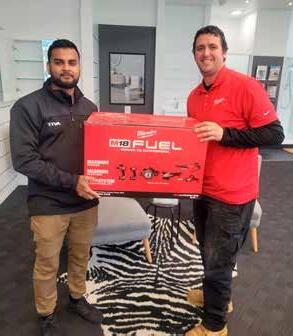 Fleur and her family at the Wellington 10km and half marathon in June.
Fleur and her family at the Wellington 10km and half marathon in June.
We like to reward our members who have great Master Plumbers branding in their businesses! This edition’s prize goes to Braidy Workman of Methven Plumbing in Canterbury. Braidy came back into the company early in 2023, after three years away getting experience elsewhere, and we love the Master Plumbers branding on his smart new van.
A $200 Prezzy Card on its way to you now, Braidy.
How are you displaying the Master Plumbers branding in your workplace? Send us your photos to be in to win the next Best in Brand prize. Just email admin@masterplumbers.org.nz

Nau mai haeri mai to new Master Plumbers member businesses:
Nevflow Plumbing – Auckland
Pivotal Gas & Plumbing – Auckland
Plumbed HQ – Auckland
RDS Plumbing – Auckland
Matrix Drainage – Waikato
Vepo Bop – Bay of Plenty/Coromandel
Surf Highway Plumbing & Gas – Taranaki
Hawkes Bay Plumbing & Drainage – Hawkes Bay
80 Plumbing and Gas – Hutt Valley/Wairarapa
ACF Plumbing Solutions – Canterbury
Ben Tucker Plumbing – Canterbury
Kilray Plumbing & Gas – Canterbury

Scotts Plumbing – South Canterbury
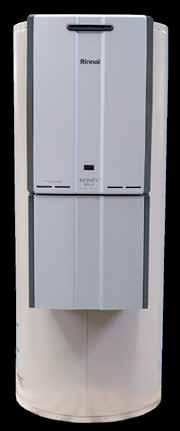
Hutt Gas & Plumbing celebrated 30 years in business last year. Director Darren Smith says it’s come a long way over that time, having begun out of a humble garage in Upper Hutt. Today, a team of 33 work out of the current Lower Hutt premises.
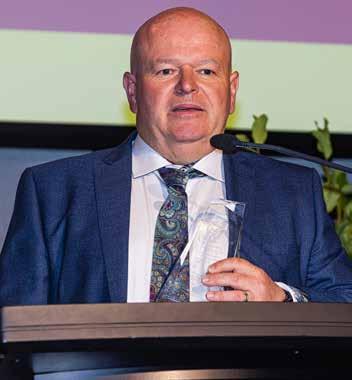
Darren, who’s a founding member of the business, says its original focus was on gas. He’d discovered gasfitting was his strength while completing his own apprenticeship, aged just 15, at the Ministry of Works in Wellington.
During that time, he gained skills in plumbing, roofing, drainage, gas and backflow prevention, doing maintenance work on a whole range of government owned property, including the Beehive, army camps, prisons and police stations.
“We did a lot of work for the Gas Board, Gas Direct and Enerco, and I picked up commercial gasfitting along the way, doing a lot of higher gas pressures for Wellington’s Nova Gas network,” he recalls.
Around the time Darren started Hutt Gas & Plumbing, Rinnai Infinities were just coming out and he was fascinated. “I took annual leave to go to Auckland for a week-long course at Rinnai, where we pulled the units apart to learn how they worked.”
This thirst for knowledge coupled with his natural skills led to Darren being increasingly sought out for commercial gas projects—and business growth followed.
It hasn’t always been plain sailing, though. The boom and bust nature of commercial work comes with its risks, and the collapse of Mainzeal Construction in 2013 hit Hutt Gas & Plumbing hard. A company restructure followed and, on the advice of a business analyst, the business diversified into domestic plumbing maintenance.
It was an extremely tough time, but the decision to add another string to their bow has been a great success, says Darren. These days, he handles the residential side of the business, leaving the commercial work in the safe hands of business partner Grant Jefferson. Fellow business partner Colleen Upton rounds out the team as General Manager.
Darren is happy to be back pricing gas central heating jobs and servicing gas appliances, but says he does like to tease his brain every now and again by getting involved in the company’s big jobs, such as the recent award-winning project for the Ministry of Primary Industries’ National Biocontainment Laboratory.
“Scotty [Adin, Hutt Gas & Plumbing joint owner] was there fulltime and I went to set the regulators up and commission the gas, which was great,” he says.
Apprentices at the business also get to benefit from Darren’s knowledge and years of experience. “We’re one of the few firms who have put a lot of apprentices through—it’s our main emphasis,” he says. “I always encourage them to stand back and look at the whole job, not just the detail they’re working on.”
Of the 50-plus apprentices that have gone through Hutt Gas & Plumbing over the past 20 years, a growing number have been women. One of the first was Shelley Weaver, who went on to become a plumbing inspector, following in her father Tony’s footsteps.
Darren describes Hutt Gas & Plumbing as a ship that has taken him on a great journey. “Without it, I don’t think I’d have gone as far as I have,” he says, adding that many of his work colleagues have also become his good friends. “Plumbing and gas has been a great thing for me.”
Hutt Gas & Plumbing co-founder Darren Smith is grateful to everyone who’s taught him what he knows over the years and always willing to share that knowledge with others, including the 15 current apprentices at this multi award-winning company.Darren Smith giving his acceptance speech on winning the 2023 New Zealand Plumber, Gasfitter or Drainlayer of the Year Award this May.
Darren as the face of Xero. “I wasn’t impressed when they put make-up on me,” he says. “They kept telling me to smile and I said, ‘I am’.” The advert appeared on billboards, bustops and newspapers nationwide. “My friend even rang me to say he’d been to a Foo Fighters concert and I was up on the big screen.”

He is regularly called on for his advice and expertise, which he’s always happy to pass on—and he is grateful to all the people who’ve done the same for him throughout his career.
They include his first boss Andy McKay and work colleague Pete Bishop, who mentored Darren during his apprenticeship.
“Andy lives in Thailand now, but we still talk once a week,” says Darren. “He taught me to be a good plumber and he’s provided guidance throughout my life.”
The late John DeBernardo also holds a special place for Darren for his willingness to share his wealth of gas industry knowledge.
“We were doing the gas for Farrah’s in Upper Hutt and the American company who had supplied the machines were due to come over to help us commission them, but Covid put a stop to that,” he recalls. “I rang John and he came along to help get them running. He was so methodical and accurate in his approach. I learned a lot from him in that short space of time.”
Whilst Darren says he was never a scholar at school, he has gained a huge amount of trades knowledge over his working life and he remains keen to learn.
“I definitely want to be involved with the future for hydrogen and biogas and to understand the process involved,” he says.
As someone who has previously served on the Standards committee for gas measurement systems and participated in the leadership group setting new industry qualifications, it is quite likely Darren will be called on for his expertise as renewable fuels become a reality for New Zealand.

Make a statement in your kitchen with the new Galiano Kontact® Pull-Down Sink Mixer.
A user focused design for the busy modern kitchen space for all those times when you have your hands full. Kontact® sink mixers are elegant, effortless, and practical. Choose from one of the 6 stunning finishes available in the Galiano range.
Greens Tapware - designed and engineered in NZ since 1935 – fostering the plumbing industry today for a bright future tomorrow.
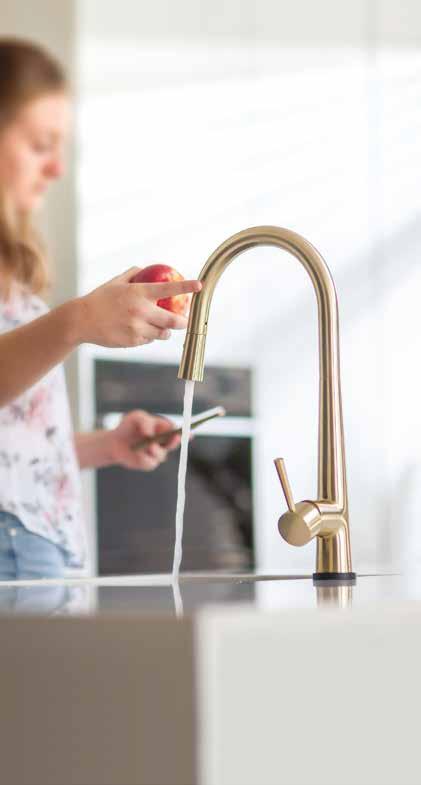
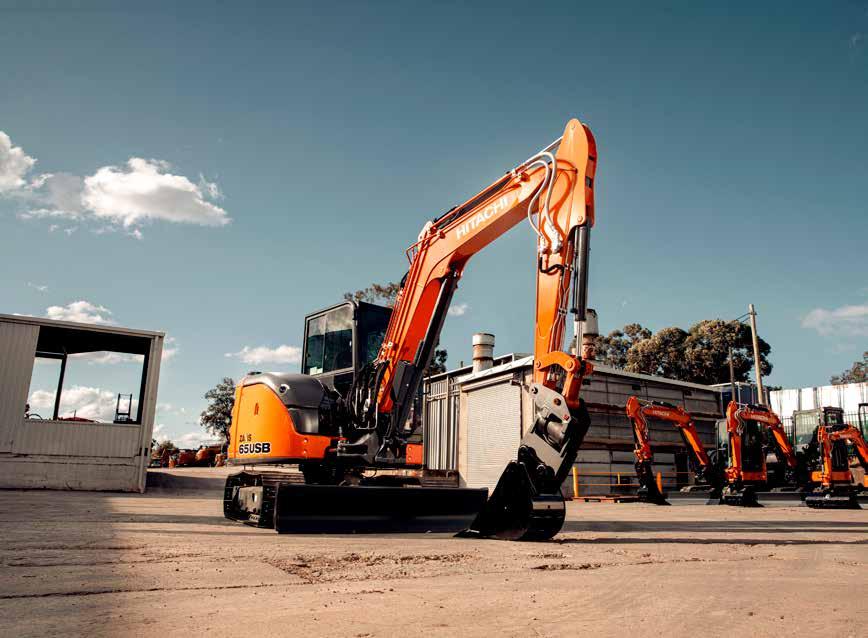
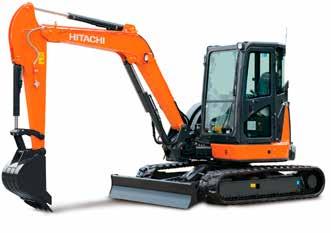

Caroma Plumbers’ Hub is a dynamic online platform developed for the plumbing community, to support your installation, maintenance and repair needs on the job every day. Get access to the answers you need for Caroma, Methven, Clark and Dorf products, available via your mobile, desktop or tablet devices.
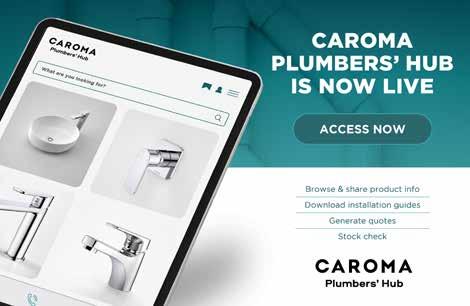
One of the primary causes of incorrect plumbing product installation is not having the right information easily available. This is solved by the Caroma Plumbers’ Hub, providing all the information you need to review and install products correctly, every time.
This digital platform houses a vast array of products for kitchen, laundry, and bathrooms. An easy-to-use Search and Browse function helps you find products across the different brands, styles and price points. To save time, you can even bookmark the products you work with most frequently for reference.
Get access to a plethora of products across Caroma, Methven, Clark and Dorf. The handy filter function allows you to tweak between product categories and brands to nail down what you are looking for. At a glance, you’ll be able to see high resolution product images, names and more.

Each product has been reviewed to include all the information you need to identify, install, or repair. Every product comes with photos and detailed information such as the features, dimensions, WELS rating, warehouse stock availability, line drawings and installation guides that can easily be downloaded and shared with other plumbers.
If you need further assistance, The Caroma Plumbers’ Hub will connect you to the Plumbers’ Hotline, allowing you to speak directly to dedicated and knowledgeable technical customer service representatives
on demand. You’ll be able to access teams with field experience who can speak your language and assist you on demand.
For plumbers who need to generate initial quotes for clients on the fly, Caroma Plumbers’ Hub allows you to assemble products quickly and efficiently into a dedicated project list. You can efficiently compare products and create lists for different customers straight from your mobile. Every quote includes technical product details and images to quickly assist with locking in a specification. Plus, you can easily share quotes with your clients via email, allowing you to project manage outstanding quotes to close down sales and requests. In addition, you can save your favourite spec list to resend to new and existing clients, cutting down on administration.
Whether you are an experienced plumber or an apprentice diving into your
new career, Caroma Plumbers’ Hub will make your life easier. Tested directly with plumber partners of all levels of experience, the tool has been designed from the ground up, with plumbers’ needs at the heart. With a wealth of information, you can be confident that you have the knowledge, tools and support you need to get the job done right every time.
Caroma is proud to introduce the Caroma Plumbers’ Hub— a digital tool available at your fingertips.The Caroma Plumbers’ Hub is now also available as an app. This free and easy to use tool is available now on mobile, desktop and tablet. Scan the QR code below or visit plumber.caroma.co.nz to get started.




A group of members from the Wellington branch headed to Auckland in June for a supplier trip, organised by local member Scott Garvie of Scotties Potties. Over two days, they visited Marley, Dux, Rheem and Allproof, enjoying product demonstrations and a first-hand look at how plumbing, gas and drainage products are developed, manufactured and distributed.
“Thanks to all involved, especially Rheem for lunch, Allproof for the bar tab and Marley and Plumbing World for the dinner,” says Scott. “It was really a cool couple of days.”
The Master Plumbers Waikato branch held its AGM in May, with David Whitfield remaining as President for another year. This is the second time in the role for David, who is Operations Manager at Morrinsville Plumbing & Gas Services. He was previously Waikato President in 2010-2012—and also served a term as Wellington President in the late 1990s. “I love the idea that I can give something back to the industry that has looked after me for 46 years,” he says.
During his current term, the branch has held four main events, including its annual race night and fishing competition between Auckland, Bay of Plenty/Coromandel and Waikato members. “We also hosted an acknowledgement night where we treated our event sponsors to an evening out, where we wined and dined them,” says David. And the high point of the year is, of course, the awards night. “This year is our ninth one, and year on year we learn more, which helps us deliver another successful night.”
He says having an exec team that has embraced change has been a real highlight. “We don’t have a secretary anymore, so smaller event groups look after everything to make the event a success. It’s not up to just one or two people to organise things.”
David encourages all members to step up and get more involved with their branch or association.

Master Plumbers members in the Canterbury region were invited to a Tradie Health Toolbox in June for a focus on men’s health. The evening included a special guest speaker, personal health check, food, drinks and spot prizes. The Canterbury Master Plumbers Association was among the sponsors of the event.
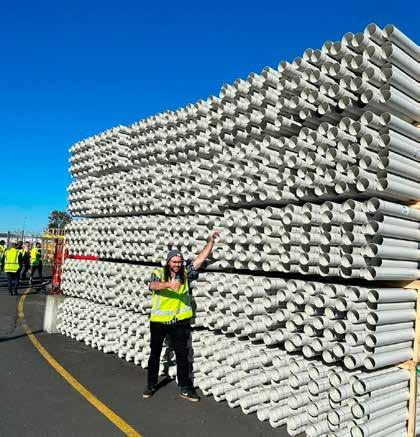
One of the group posing in front of an impressive stack of Marley pipe during the tour of the Auckland plant.
Queenstown Lakes District President Brad Winkel with Membership Milestone Award recipients Brent Anderson (above) and Rory McLellan
Gisborne branch President Alex Hyland presenting Membership Milestone Awards to Steve Wolter (above) and Roger Moss (right).
At the Waikato AGM in May, Membership Milestone Award certificates were presented to Pete Hosking of Hosking Plumbing Services and Luis Agnew of McGuire Plumbing—both marking 30 years of Master Plumbers membership.
The following month, the Gisborne Branch hosted a general meeting and industry update in June, providing a great chance to connect, check in with everyone and discuss what is happening in the region post Cyclone Gabrielle. President Alex Hyland was also thrilled to recognise BJ Moss Ltd for 30 years of Master Plumbers membership and Steve Wolter Plumbing for 20 years.
Also in June, Queenstown Lakes District Branch President Brad Winkel acknowledged 30year membership Master Plumbers Membership Milestones for Anderson Plumbing and Drainage and McLellan’s Limited.



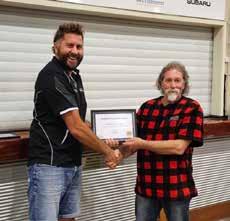

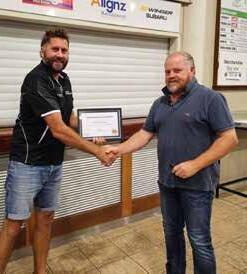

New TRAFIC has been thoughtfully redesigned to give you the freedom and flexibility in how you run your business, while remaining comfortable and practical. Plus, with new safety, driver assistance and connectivity features, New TRAFIC is built for the future.

Special pricing is available for Master Plumber members. Visit our website and register your interest. renault.co.nz/master-plumbers
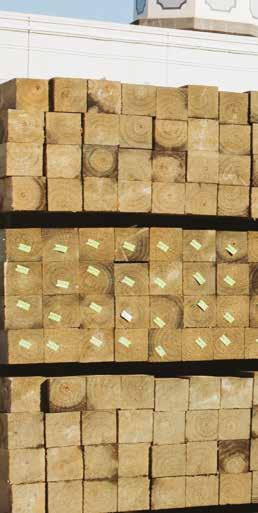
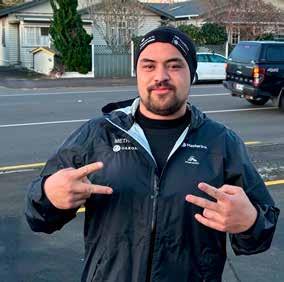
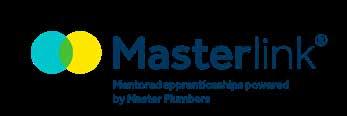
As this edition went to print, 11 Masterlink apprentices had just returned from an epic 16-day Building Leaders Course in the Marlborough Sounds, having each won a 2023 Masterlink Outward Bound Scholarship, generously sponsored by Methven Caroma.
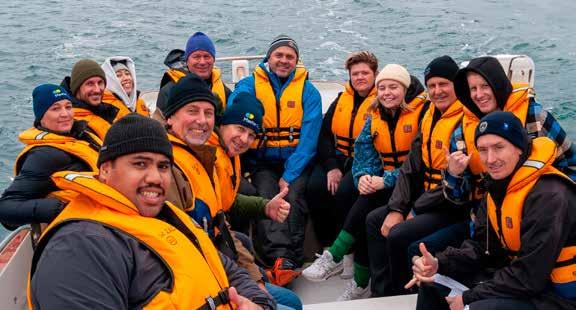
Masterlink RMs Rae Meharg and Steve Meadows were invited to join the group for two days to get a taste for what it’s all about. They were joined by Tom Berkley, a senior manager and the apprentice programme supervisor at Auckland Plumbers Group, Dean de Jager of Methven Caroma and representatives from other construction trades.
“We were there to assist and mentor the apprentices, who were already there,” says Rae. “Whatever the leaders wanted us to do we did!”
That included everything from running 3km at 6am to sailing and learning the different areas of the boat. The invitees spent the evening talking to groups of apprentices, listening to their stories and getting to know them better.
“Being at Outward Bound takes you right out of your comfort zone,” says Rae. “I did things I would never normally do, like jump in the ocean on a cold, frosty morning. If you just put your mind to it, you can do anything.
“You learn to switch off and forget about the daily use of devices and technology and, although I was only
there for two days and one night, it was nice to absorb the scenery and surroundings, and not worry about all the daily concerns and stresses. It was an absolute cracker of an adventure.”
We’ll bring more about the Outward Bound Building Leaders Course in the next edition.
The high number of entries for the 2023 NAWIC Excellence Awards has proved a positive shift in attitude within construction, said one of the judges of this annual celebration of women working in the construction industry.
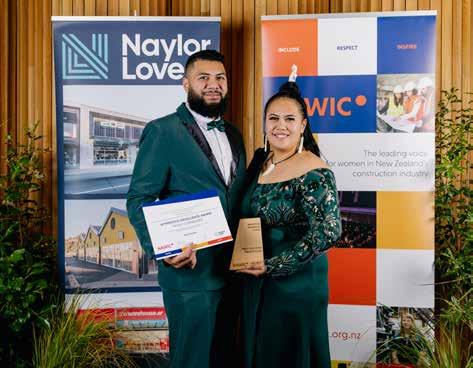
Masterlink is proud to have had two apprentices as finalists in the Apprentice Excellence Award category, and credit must go to their host businesses for providing great
on-job training. Emma de Salis is a second-year apprentice at McBeth Plumbing & Drainage in Taupō, and features on our cover this edition.
Hera Eruera is a fourth-year apprentice hosted by Auckland Plumbers Group and is also a previous NZ Plumber cover star.
The awards ceremony was held in Christchurch on 21 July, with Hera awarded Highly Commended in her category.
Masterlink Regional Managers and office teams completed a four-hour MATES Connector training session in July. The MATES suicide prevention programme uses training to raise awareness that there’s a problem with suicide within the construction industry, and that we can all be part of the solution.

Training is delivered at three levels—MATES Inducted, Connector and Asist.Inducted helps to
introduce workers to the nature of the problem and provides practical guidance on how they can assist. Connector trains people to help keep someone in a crisis safe and connect them to professional help. Asist equips individuals to develop safe plans for workers at critical risk. Masterlink encourages host businesses to participate in MATES training to help keep your teams safe.
Masterlink has a fantastic administration team, who schedule apprentice health and safety courses and block courses, book accommodation, deal with the paperwork and generally help in any way they can.
We’re thrilled that Amanda Macelli Monteiro, who joined us as a temp in February, has now become a fulltime part of the team.

Originally from Brazil, Amanda spent five years travelling on her own before discovering that home is not a place, but a person. “My Kiwi partner is my safe space,” she says.
A keen golfer, she also enjoys anything creative. “I am currently working on a painting to give to a friend, but I also dabble in lino printing, making jewellery and drawing,” she says.
Amanda is enjoying making her new role her own and growing together as a team. “I love the idea of helping people achieve their goals and making a difference in their lives,” she says of being part of Masterlink.
Warm welcome to the Masterlink whānau!

Kerrigan Waller
Tevendale Plumbing, Rotorua
Jack McLachlan


Coastal Plumber, Opua-Russell



Shay Lawley
Te Aroha Plumbing and Drainage
Max Drake
CF Reese Plumbing, Hamilton
Lin Shen
Daryl the Plumber, Christchurch
Kennedy Kira
Plumbing & Heating Centre, Dargaville
Rory Van Vroonhoven
CF Reese Plumbing, Hamilton
Chen Chen
Ninjia, Wellington
Congratulations to all who have recently completed their plumbing, drainlaying and gasfitting qualifications—a major achievement! Michael Griffen, Finlay
Nolet, Jesse Dodd, Levi Wairau and Jackson Dempster.
Gabriel Brighouse, who works at JLP in Wellington, is the first Masterlink apprentice to have been presented with a pounamu in recognition of completing his apprenticeship.


We hope these greenstone gifts will remind all newly qualified Masterlink apprentices of their achievements, setting them up for continued success on their journey as professional tradespeople.
This new initiative is part of Masterlink’s commitment to embracing te ao Māori. Sourced from the South Island’s West Coast and blessed in the Hokitika River, the toki (adze) is a symbol of ability, strength and determination. The pounamu is carved by the
same whānau who created the New Zealand Master Plumber of the Year Award—taonga paraihe o Master Plumbers—making our apprentices part of a plumbing legacy.
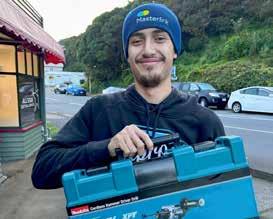

Over half of all Masterlink apprentices have now completed the Masterlink online health and safety modules, helping to ensure everyone stays safe at work. Apprentices are awarded a Makita Cordless Hammer Driver Drill on completion of the series.
To find out more about the course, email admin@masterlink.co.nz
The Apprenticeship Boost employer payment scheme provides subsidies to eligible businesses that provide on-job training to first- and second-year apprentices. This government scheme has been extended to December 2024 and Masterlink passes any funding received direct to host businesses. It’s a great way to grow your business!



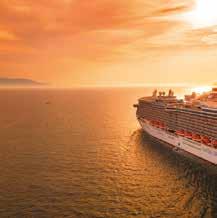





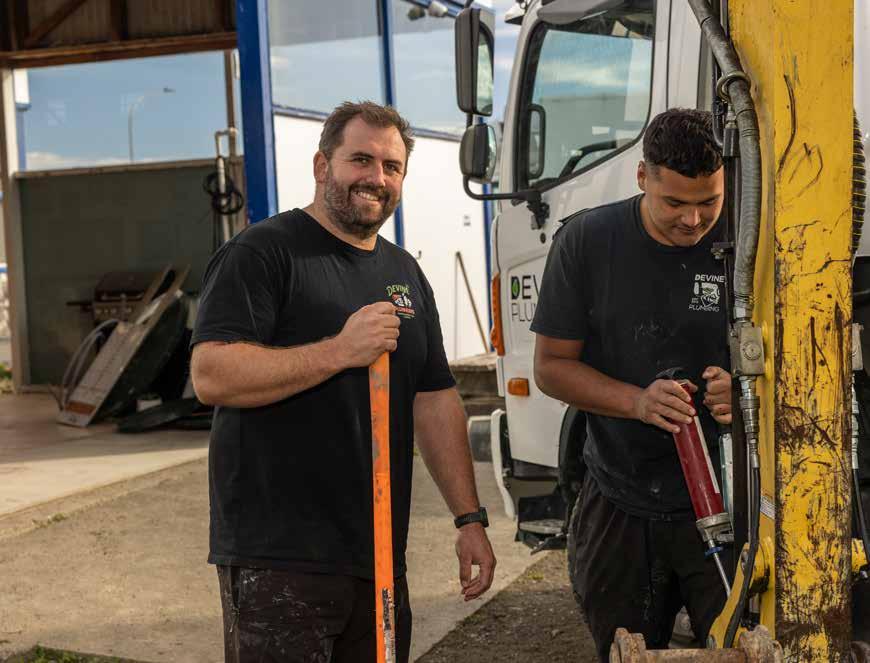
Check out this new mental health and wellbeing resource aimed at small business owners.
Brave in Business is a new e-learning series from business.govt.nz to help small business owners and operators improve their mental health and wellbeing. Learn at your own pace with two courses featuring short videos and a check-in survey.

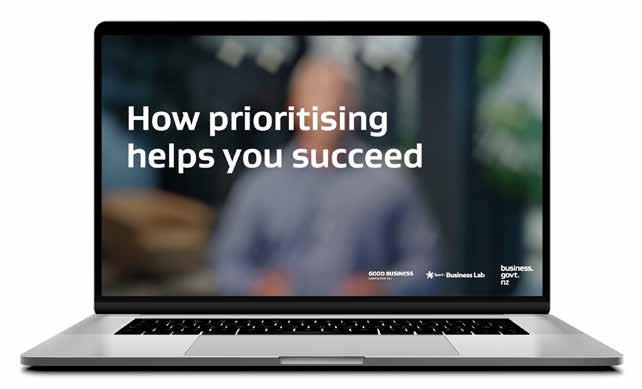
The courses are designed to help you manage your time and business demands effectively, so you can enjoy the time you have when not working on your business.
Developed in partnership with Spark Business Lab,
the series gives easy-to-follow advice written by two of New Zealand’s top organisational psychologists from the Institute of Organisational Psychology. Course topics include how to prioritise for success and how to take control when overwhelmed.
Find the free e-learning series at www.business.govt.nz/ wellbeing-support/brave-in-business-e-learning
Canterbury Master Plumbers members united to help on an extension to the Canterbury Charity Hospital, which will improve healthcare services in the region. We chat to project lead Michael Diver to learn more about the heartwarming story behind this year’s Kava Cup winner at the 2023 New Zealand Plumbing Awards.
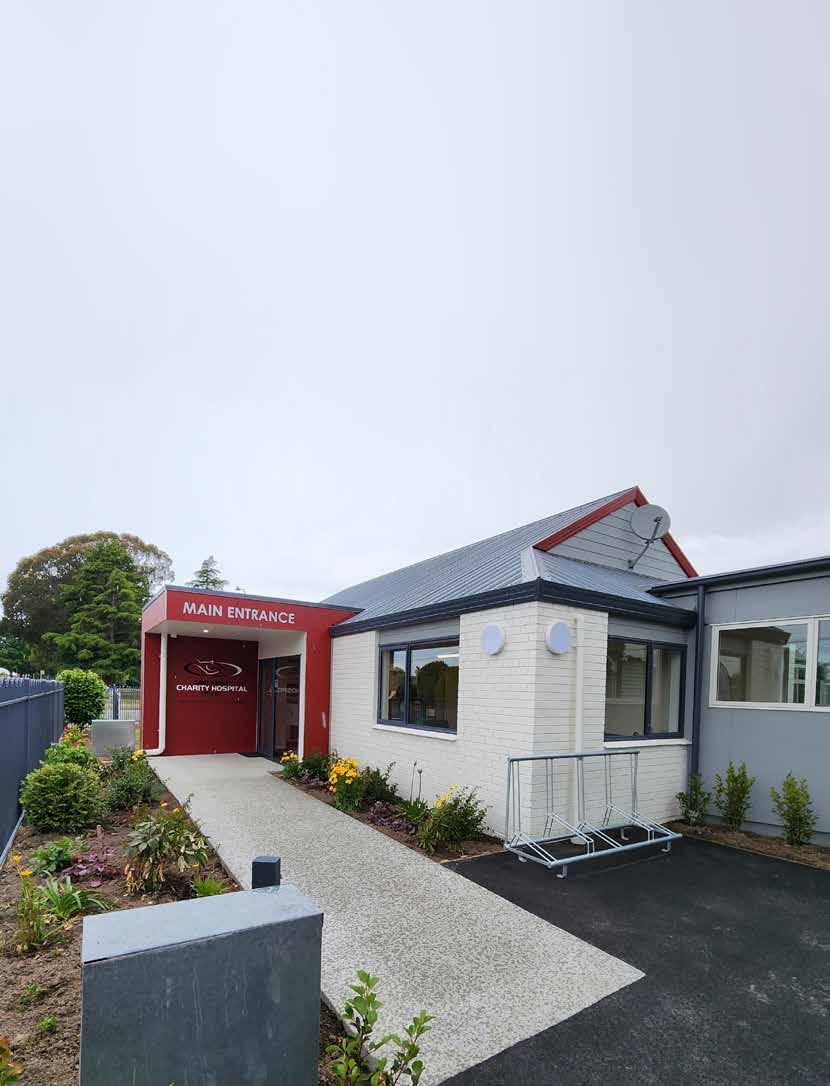 AUTHOR: JE T’AIME HAYR
AUTHOR: JE T’AIME HAYR
The Canterbury Charity Hospital Trust has provided free healthcare services to those in need within the Canterbury District Health Board (DHB) area since it was established in 2007. Operating solely on donations, grants, and the support of the local community, the charity hospital has been able to significantly reduce its annual operating costs from around $2.8 million to around $950,000 a year.
However, in recent years, the charity hospital has seen more cases of bowel cancer in the Canterbury area for under 50-year-olds. As a result, the demand for its services has continued to grow and there is an overwhelming need for colonoscopies, endoscopies and elective services. Bowel cancer, women’s health and dental care are the three fastest growing areas for which the hospital is seeing patients.
Recognising the urgency of the situation, the Canterbury Charity Hospital purchased adjacent properties to create dedicated reception areas and overnight facilities for the hospital’s staff and volunteers—areas that had not previously existed.
As a charity, however, they were going to need a lot of help to make their vision a reality. When Naylor Love Construction approached Michael Diver, Managing Director of Peter Diver Plumbing & Drainage, for assistance, Michael wasted no time in rallying the troops at the Canterbury Master Plumbers Association (CMPA).
“We’ve done a lot of work for the hospital over the past 10 years,” says Michael, who is CMPA President. “So, when Naylor Love Construction reached out and told me they were struggling to cover the renovation costs, I was keen to help.”
Without the involvement of local tradespeople, the additional properties acquired by the charity hospital would not have been adequately fitted out. Michael promptly reached out to the CMPA committee and Master Plumbers Business Partners for assistance and was overwhelmed by the positive response.

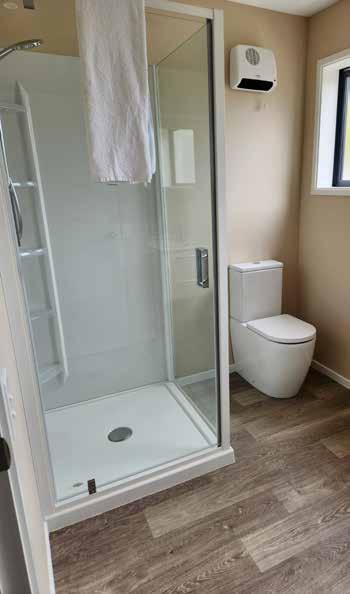
Instead of seeking monetary donations, Michael focused on obtaining product donations and volunteer labour to bring the project to life. “Everyone in the executive team put their hand up to donate labour and I didn’t have to approach a second company for supplies; everyone was happy to get on board. I am hugely grateful to the suppliers that got involved. This job wouldn’t have been possible without them.”


Taking on the responsibility of design work, Michael meticulously prepared drawings, specifications, and the scope of works required for the project. These plans were submitted to Christchurch City Council, ensuring compliance with regulations and standards. The entire project, from conception to completion, spanned four months and was carried out during normal working days.
Five different plumbing and drainage companies, with one to two individuals from each, lent their skills and expertise to the endeavour. Kitchens, bathrooms, and laundries in both houses were removed and replaced with staff facilities, along with patient and volunteer areas and freshly renovated bathrooms and laundries. Extensive re-piping and drainage work were undertaken, including the addition of external drainage and threshold channels, landscaping drainage, and new link roofs to connect the buildings.
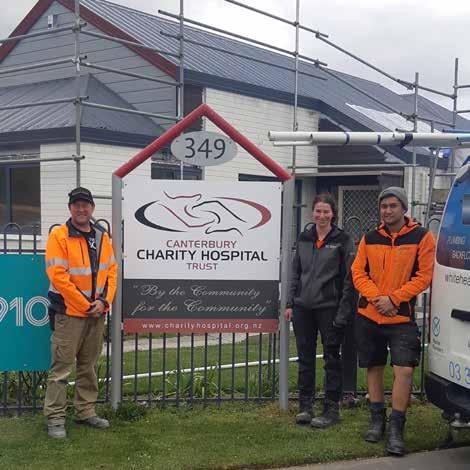
The entire project, from conception to completion, spanned four months and was carried out during normal working days.Five Master Plumbers Canterbury member businesses volunteered their skills for the project. Shown here, from left, are Martin Barrow from Peter Diver Plumbing and Drainage, and Virginia Cundall and Glen Robertson from Whitehead Plumbing & Gas. Plumbing and drainage product donations from Master Plumbers Business Partners helped the project come together.
The cost of labour and materials, estimated at $75,000, was entirely covered by CMPA and local business partners, emphasising the profound impact of collective efforts.
As with any job, Michael says clear communication was key in coordinating the various groups involved. “Emails were used to relay tasks, timelines, and expectations, ensuring everyone was on the same page, while executive meetings were held to discuss progress and address any issues that arose. With plans and specifications prepared in advance, all stakeholders had a clear understanding of their roles and responsibilities. Thanks to the assistance of one of my office managers, the co-ordination between the volunteering groups and suppliers was pretty easy.”
The completion of the project has not only freed up surgical space in the original buildings but also provided an enhanced patient services reception and essential facilities for the hospital’s dedicated workforce and volunteers.
The community celebrated the opening and rededication of the hospital, with Christchurch Mayor Phil Mauger and Hospital Patron Sir Jerry Mateparae presiding over the ceremony. A heartfelt Christmas function followed, expressing gratitude to all the volunteers and supporters who made the expansion and renovation possible.
Canterbury Master Plumbers take immense pride in their contribution to this community project. By joining forces, these skilled tradespeople have demonstrated the impact that collective action can have on the lives of those in need and given huge value back to their community. As Michael says, “It is a privilege to be able to help the Christchurch charity hospital to keep looking after their Canterbury and West Coast patients.”
Huge thanks must go to the following volunteers and suppliers.
CANTERBURY MASTER
PLUMBERS MEMBERS
Peter Diver Plumbing & Drainage
Clyne & Bennie
Whitehead Plumbing and Gas
The Pipe and Drain On To It Plumbing
BUSINESS PARTNERS
Mico – pipe fittings
Plumbing World – tapware
Rheem – hot water cylinders
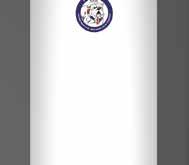
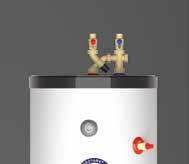
Caroma – toilets
Rinnai – hot water boiler unit
Allproof – external channel drains
Aqualine – backflow preventors
RMC – hot water cylinder valve packs
BathCo – vanity units


Kohler – shower cubicles
Dux – in-wall water pipe and fittings
Marley – PVC pipe and fittings
MM Brands – copper pipe and brass fittings


• Direct connection to any suitable HWC
• Up to 7.5kW and 161 litres per hour recovery rate.
• Hot water production up to 70⁰C.
• Efficiency up to 460% (Max COP 4.6).

• Mitsubishi compressor and Grundfos pump.
• Blue coated coils for high corrosion resistance.
• Composite case will not rust, peel, or fade.
• Includes touch screen controller for easy setup.
• Requires Ritter tank probe (not included with HP)
FIND OUT MORE
• DOWNLOAD A BROCHURE
• TALK TO THE EXPERTS (0800 WATERWARE)
SCAN THE QR AND DOWNLOAD A BROCHURE




Water management is one of the most significant challenges we humans face as climate change brings increasingly frequent and extreme weather events, from cyclones and floods to droughts and water scarcity.
To adapt calls for genuine out-of-the-box thinking: new technologies that will provide innovative water solutions to help improve the lives of people in all corners of the world.
With its Aliaxis Next division, launched in 2021, Belgian-based Aliaxis has a bold ambition to do just that by partnering with business start-ups whose focus is on sustainable water management, resilient water infrastructure and water for food production.
Take Opti, for example. In November 2022, Aliaxis Next acquired this US-based software company that has developed a solution to combat growing incidences of water pollution caused by urban stormwater runoff, due to combined sewage overflows and underdimensioned stormwater retention ponds.
Opti’s cloud-based software leverages weather forecasts and input from sensors deployed in the field to automatically control operated valves, freeing up space for an anticipated excess of water ahead of stormy weather.
By retrofitting existing assets with this software technology, 60 percent more capacity can be created—saving the effort and expense of building a new pond or putting a much larger cistern under a building.
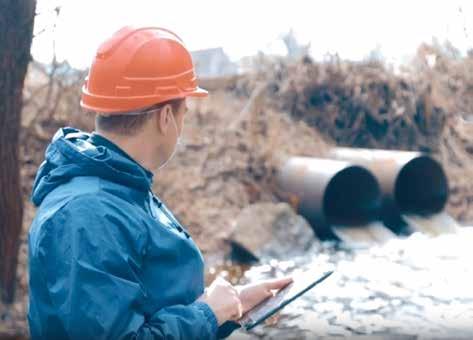
Other Aliaxis partnerships include Portuguese tech company Zypho, acquired in May 2023, whose shower drain heat recovery systems transfer heat from hot shower water to the incoming cold water, recycling up to 75% of the energy used to heat the shower water.
“We estimate the system, already available in France, the UK and Spain, will save households enough on bills to pay back their investment in one to three years,
while contributing to a less carbon intense world,” said Aliaxis CEO Eric Olsen on announcing the acquisition.
In New Zealand, plumbers will be familiar with Aliaxis through the company’s Marley and Dux brands. Scott Townsend, Aliaxis General Manager NZ Marketing, says the company’s holistic approach to the way its piping systems are used has the potential to make a significant impact here.
“For example, Watercare could monitor Auckland’s entire wastewater system in real-time for pollution events using environmental technology developed by Kando, an Israeli digital solutions company that partnered with Aliaxis Next in 2020.”
In just two years of existence, Aliaxis Next has partnered with many such
businesses to help bring innovative water solutions to life, and there will be plenty more to come, says Townsend.
This July, Aliaxis took another step forward on its sustainability journey by joining the United Nations Global Compact—the world’s largest corporate sustainability initiative. “Joining the Global Compact is a meaningful step putting Aliaxis in the club of companies publicly committed to sustainability,” said Olsen.
“We are eager to contribute to this collaboration with the United Nations to continue pushing forward our sustainability programs. Our teams are mobilized and determined and contribute on very many concrete actions which embody the Global Compact’s 10 principles.”
Watch this space.
As part of its commitment to a sustainable future, Aliaxis is investing in business start-ups with innovative technologies to help solve global water challenges. NZ Plumber talked to Scott Townsend of Aliaxis NZ about some of the exciting solutions making a real difference around the world, including here in Aotearoa.Kando partnered with Aliaxis Next in 2020 to provide water utilities with technological solutions for detecting, tracking and anticipating events in their wastewater systems in real time.

The Grant Vortex range was launched to the plumbing and heating market over 20 years ago and has since won multiple awards for its innovation and highly efficient attributes. At the time of launch, the Vortex range was one of the first condensing boilers on the market and is described by its inventor Stephen Grant as the most efficient boiler of its time available in the UK and Ireland.
The introduction of this product was the catalyst for a sustained increase in boiler efficiencies throughout the industry and a reduction in running costs for homeowners. The higher efficiencies from these appliances have, over the years, contributed to a reduction in carbon emissions amounting to many millions of tonnes.
The Grant Vortex condensing diesel boiler range was launched in New Zealand in 2017 and has provided a reliable, cost-effective solution for homeowners installing central heating for the first time or upgrading a heating system. The range is available in 15 different models with outputs from 15kW to 70kW, including modules, boiler house, utility and combi— giving optimum variety for installation in a range of properties and preparing the property for its changing heating needs for the future.
More recently, Grant was recognised in 2021 for its R&D breakthrough which enabled the company to future-proof the full Grant Vortex range to use HVO biofuel through making a slight modification to the boiler, such as adapting the size of the fuel injector nozzle, fuel pump pressure and blast tube.
Grant’s R&D team had spent many years working with third level institutions, industry partners and renewable fuel producers, focusing on more sustainable and carbon saving fuels to enable this innovation.
Utilising HVO can help to significantly reduce carbon emissions, which is something that Grant has been passionate about when developing all of its heating technologies. This breakthrough in research and the development of HVO-ready condensing boilers means that Grant has largely transformed into a renewable heating company with its product portfolio including the Grant Vortex condensing boiler range and highly efficient Grant Aerona3 R32 air to water, air source heat pump range and other products including the Grant Spira Pell condensing wood pellet boilers.
‘A’ efficiency rating and up to 97% efficient—one of the most efficient on the market
Entire range features innovative award-winning Grant Vortex heat exchanger
Grant Vortex boilers come with 12-month manufacturer’s warranty and five-year warranty on the boiler shell
Each boiler is simple to install with no complicated wiring
Grant Vortex Combi model ensures instant hot water
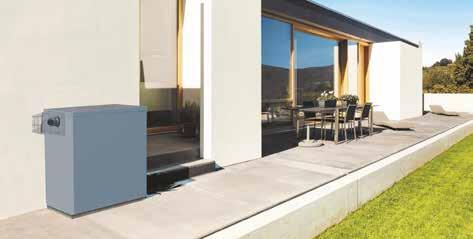
Grant Vortex compact model is a smaller model, specifically designed to fit in a kitchen
All Grant Vortex boilers feature whisper quiet operation and fullfront service access
All Grant Vortex boilers are fully compliant with ErP directives.
The RMC FloodGuard range has been designed to reduce the extent of flooding and water damage caused from burst flexible connection hoses. In the event of excessive water flow or hose burst, the valve automatically snaps shut to minimise water escape and damage.
Learn more about RMC’s trusted range of valves and fittings at relianceworldwide.co.nz

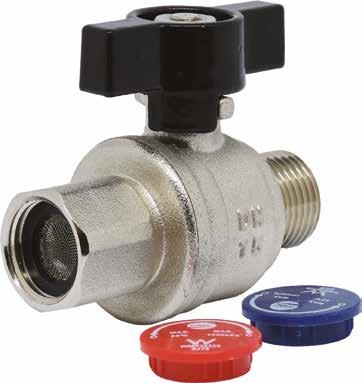
Hot water heat pump grants are helping commercial property owners replace existing gas boilers with sustainable water heating solutions, as Rheem explains.
Decarbonisation, alternative energy sources, clean tech— these concepts are nothing new.
According to EECA, about 40% of NZ’s total greenhouse emissions come from our energy use, so it’s not surprising that sustainable energy solutions have been discussed and promoted for a number of years across a wide range of industries. While all agree that something has to give, tangible change hasn’t always followed, however—and for many it’s almost been business as usual.
The introduction of MEPS (Minimum Energy Performance Standards) and MEPL (Mandatory Energy Performance Labelling) has already encouraged New Zealand companies to develop, manufacture and import energy efficient products, but further action is required if NZ is going to meet its net zero climate target by 2050. To achieve this bold goal, there needs to be far less reliance on fossil fuels.
Thankfully, the government isn’t leaving industry to solve this problem by themselves. The GIDI (Government Investment in Decarbonising Industry) Fund was created specifically to accelerate industry’s transition to renewable energy sources. The fund is part of the government’s Climate Emergency Response Fund, and a total of $1b has been allocated to GIDI over the next seven years.
So, what does this mean for the plumbing industry?
One of the early initiatives within GIDI is the Clean Tech Hot Water Heat Pump Programme. The grant aims to help replace fossil fuel technology used to heat water for day-to-day water consumption in commercial and industrial buildings*. Importantly, this funding will allow existing technology to be

swapped out by commercial building and business owners, and replaced with more sustainable hot water heat pumps.
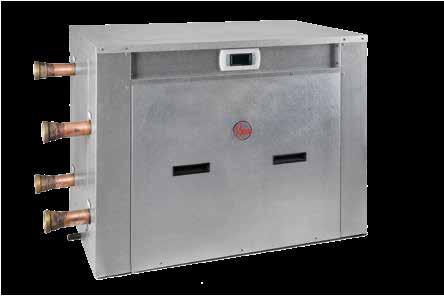
Switching gas boilers to heat pump-based boiler systems is a huge opportunity for NZ, says EECA. Heating water in industrial and commercial businesses consumes nearly 10% of all nontransport energy in NZ. It’s also the largest user of fossil fuels, as well as the sector’s biggest source of carbon emissions.

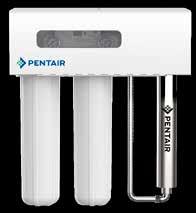
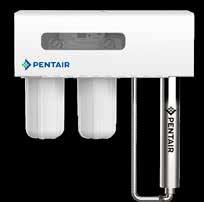
A recent IEA World Energy Outlook Special Reports showed the heat pumps currently available on the market are three-tofive times more energy efficient than the gas boilers, so if all NZ building owners were to make the change to modern, lower emission heat pumps, there would likely be a tangible change in NZ’s overall impact on the environment.
Rheem NZ, for example, supply Air to Water Commercial Heat Pumps that have a Coefficient of Performance (COP) of up to four. This means that for every 1kw of electrical input, 4kw of cooling or heating output is generated. The result is reduced CO2 emissions, as well as a dramatic decrease in operating costs. Rheem’s specialist commercial team are already working with specifiers and installers across the country, sizing, selecting and installing heat pump hot water systems and helping businesses meet their sustainability goals.
For Rheem, these changes are welcome. The government’s incentives and regulations have encouraged innovation, and the team who design and manufacture Rheem’s commercial range of products in NZ and Australia are working hard to continue lowering the overall impact of these products on the environment.
Rheem have also set up a dedicated NZ sustainability team, who are responsible for making sure Rheem hit their own sustainability goals.
Rheem are excited about their low carbon future and would love you to join them on the journey.
If you have any questions about the current government regulatory frameworks or incentivisation programmes, please feel free to reach out to Rheem’s commercial team. Contact Commercial Manager Paul Watson on 021 437 611; paul.watson@rheem.co.nz
* www.eeca.govt.nz/co-funding/industry-decarbonisation/gidi-clean-tech
This funding will allow existing technology to be swapped out by commercial building and business owners, and replaced with more sustainable hot water heat pumps.

Drainage systems in kitchens or food and production facilities can be critical to their operation. These systems need to cater to the specific needs of each facility and install scenario. This will likely include hydraulic performance, load rating, slip resistance and ongoing cleaning/maintenance.
Each commercial kitchen or production facility will have a unique layout to best enhance the efficiency of its operation. This often results in machinery/equipment and workstations being in defined locations
with services designed to fit and cater to that exact space and requirement.
Allproof’s commercial kitchen channel (CK Series) has been a key go-to product for these projects. Customisation has been widely utilised to develop the best solution for each installation. When customising a CK Series product, the installer can select from a variety of variables such as size, outlet location, quantity of outlets and grate options.
While this option provides a high degree of flexibility, it also involves lead times,
as Allproof’s team of fabricators need to draw/design it before cutting a flat pattern, folding, welding, and cleaning. Some projects might have tight timelines that do not allow for this process, so Allproof have designed an innovative modular channel, the MC Series, which can be assembled from stock components to create desired layouts.
The MC Series has been designed to provide an off-the-shelf solution that is easy to transport and assemble on site,
while also creating a system that can be tailored to suit each unique scenario. It comprises channels and sumps, all connected with bolted unions using gaskets and end caps. Outlets suit 100mm PVC or HDPE pipe with O-rings and come with a double strainer basket. Sumps and channels include anti float tags and 15mm epoxy filled safety edge.
The channels come as 100mm or 200mm clear opening in one metre and two metre
lengths. Channels are available in 100mm and 125mm depths as well as a joiner channel with built-in fall to connect them. Additionally, a one metre length channel with a 125mm depth is available with a centre outlet in both width options. Sump sizes are available to suit the two channel width options, providing a 200mm and 300mm clear opening. Sumps have been designed to connect to the channels as either the end point or as a continuous sump in the centre of channels.
The MC Series provides a high degree of flexibility by creating layouts to suit the requirements of each installation. For example, if located in front of a chiller door,
a 1m channel and sump could be selected, creating a 1200mm length drainage system spanning the width of the opening. A slip resistant ladder (SRL) grate would provide an ideal solution for fast-moving foot traffic and heavy wheel loads moving stock in and out.

If the install is in a large canteen or restaurant kitchen, selecting one 1m channel with a centre outlet, plus any further channels as needed for the space, with two end caps provides an ideal solution. Using a heelproof wedge wire grate will prevent service staff from potential injury.
Should an installation be in a food production factory with equipment that may release large volumes of water quickly, the 200mm clear opening channels provide excellent catchment and accommodate runs of up to 6m terminating at a sump. A mirror image can then be run in the opposite direction, resulting in 10m between sumps. Overall system length is unlimited when using the continuous sump.
From these examples, it’s clear the MC Series offers a high degree of flexibility while also allowing for fast turnaround, transportation, and easy on-site installation by utilising stock components.
This boiler house diesel boiler features the award-winning unique grant Vortex heat exchanger and has some of the highest
available
Floor standing indoor diesel condensing boiler with dual set point for central heating and or an indirect domestic hot water system.


Q: Why should RMC FloodGuard valves be included with flexible hose installations?
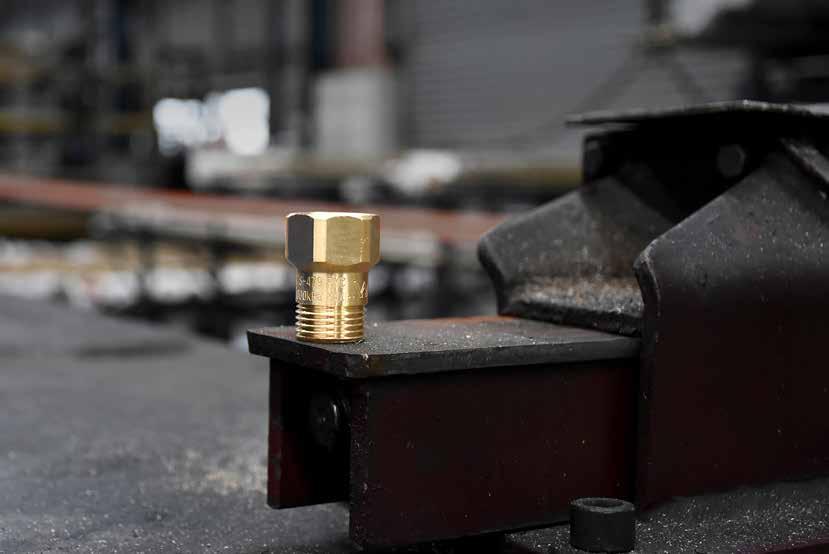
A: The RMC FloodGuard is a clever device that provides protection to homes and businesses against flood damage caused by faulty hoses. By installing the RMC FloodGuard valve, you give your customers peace of mind and the confidence that they’re protected against the costly and inconvenient damage caused by defective hoses.
Q: How does the valve work?
A: The RMC FloodGuard is engineered to shut off when there is excessive water flow, reducing the risk of costly flood damage. This innovative valve allows water to flow normally until it detects a flow rate that exceeds 14L/min for 15 mm pipe or 19L/ min for 20 mm pipe. If these levels are
exceeded, the valve automatically shuts off, stopping the water flow until it is reset— saving precious water, and preventing any potential damage.
Q: How should I recommend its use to my clients?
A: Burst and leaking hoses are more common than most people realise, with thousands of insurance claims being filed each year due to failed and burst flexible hoses. Even with insurance coverage, a burst hose can result in significant losses. Installing an RMC FloodGuard valve is a wise decision for everyone looking to safeguard their property against water damage. The consequences of water damage can be both financially and emotionally taxing—with even a minor leak leading to mould, mildew and other forms of damage.
1. It’s a cost-effective solution to a common problem
2. It’s quick and easy to install in both new and existing properties
3. It offers peace of mind to owners.
www.relianceworldwide.co.nz
3 REASONS EVERY HOME AND BUSINESS SHOULD HAVE RMC FLOODGUARD VALVES INSTALLED:
In this quick Q&A, RWC explains how the innovative FloodGuard valve works to provide protection against flood damage from faulty flexible hoses.


Recently, I was loaned a long wheelbase Renault TRAFIC for a week to assess as a plumbing van.
First impressions of the van as soon as I laid eyes on it was just how big the vehicle is, but across the course of the week I was pleasantly surprised that it was simple to drive around town and even park despite its obvious bulk.
That was helped by a reverse camera that was mounted high and gave a fantastic wide angle, meaning any car park was a breeze.
Of course, the major benefit of that big size is there is plenty of storage space and the nice box sides mean you can install shelving to full height.
Also with a full height bulkhead, it gives the extra layer of safety and security to really load the back of the van full of tools and product, plus it helps to dull down the noise of both the van and your load. Another bonus in the cargo area is a multitude of fixing points to strap down those bulky items.
Being a kind boss, I even let a couple of the boys have a drive for a day or two and they were impressed—not just with how the van drove, but the size and access of the van, claiming it allowed them to load quickly and with ease, allowing them more time in the trenches.
Once you discover the cup holders and arm rests, it’s fair to say the TRAFIC is actually quite a comfortable vehicle to drive, with a good Bluetooth system allowing for simple communication with both the team and customers.
It sits on the road well and has more than enough power to cruise along nicely with plenty of gear onboard, while across the course of the week we had it, we couldn’t even get through a tank of diesel.
All things considered, the TRAFIC would be an asset to any plumbing fleet.
Register

The Rheem Eclipse Continuous Flow water heater has changed the game, delivering hot water with unmatched speed. Its precise modulation of heating elements, combined with temperature and flow sensors, ensures rapid temperature delivery to residential apartments and commercial buildings.
The Rheem Eclipse comes in 18kW and 27kW models, offering maximum output temperatures of 50°C or 60°C. Its versatility reduces capital costs and spatial requirements, with 18kW models serving single bathrooms and 27kW models catering to entire apartments or office kitchens. With three memory modes and a user-friendly touch screen display, accessing pre-set child-safe or bath temperatures is quick and convenient. The touch screen display also provides water consumption and flow rate information, while an automatic sleep mode promotes energy savings. The inlet and outlet fittings, as well as the electrical connections, can be concealed through the wall or from the bottom of the water heater, so there is no shortage of installation options. Experience the future of efficient water heating with the Rheem Eclipse Continuous Flow and enjoy a seamless hot water experience in your home or workplace.
The RMC FloodGuard line of products has been created to reduce the extent of flooding and water damage brought on by excessive water flow. The valve automatically closes in the case of a burst or damaged hose to minimise water escape and potential water damage. The RMC FloodGuard valve can only be installed by a licenced plumber. It is a male/female configuration designed to be fitted inline between the isolating tap and the hose connection. In the event of excessive water flow, such as a burst hose, the valve will automatically close stopping the water flow. Available in 15mm and 20mm valves, and 15mm Isolation valves, the RMC FloodGuard is designed for quick and easy installation for sinks and basins (15mm) and appliances such as washing machines and dishwashers (20mm).
Contact Reliance Worldwide Corporation for more information on 0800 800 523; sales.nz@rwc.com or visit www.relianceworldwide.co.nz
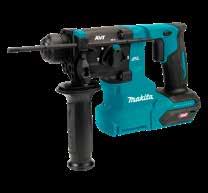
Need a cordless concrete solution? The Makita 40Vmax XGT Brushless AWS 20mm Rotary Hammer – SDS-Plus, AFT, AWS Capable (HR010GZ) – is compact and lightweight, for reduced operator fatigue. It delivers the power, speed and run-time for corded demands, without the cord. This hard-hitting 1,000W* brushless motor provides 2.3j** of hitting energy performance, combined with advanced comfort and convenience features. These include: Active Feedback-Sensing Technology (AFT) – electronically turns off the motor if bit rotation is suddenly forced to stop Anti-Vibration Technology (AVT).
The HR010GZ has dust extraction capability (DX16 sold separately), with an on-board HEPA Dust Extractor or stand-alone AWS Extractor options. For added efficiency, the Rotary Hammer is equipped with Auto-Start Wireless System (AWS), which uses Bluetooth technology for wireless power-on and poweroff communication between the equipped tool and dust extractor.
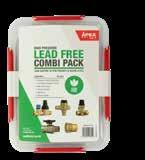

MBIE’s changes to the maximum allowable lead content for all plumbing products in contact with drinking water is coming into effect, and Apex Valves is leading the charge with its new Lead Free Combi Pack (CP 20LF).
The Lead Free Combi Pack for mains pressure hot water cylinder installations is the first to reach the New Zealand market, and includes the following, all containing less than 0.25% lead:
Pressure Limiting Stop Valve
Cold Water Expansion Valve
Tempering Valve
Ball Valve
Non-Return Valve
Female Socket.
This pack is backed by Apex Valves’ 5-year warranty and provides you the same performance and confidence you have in the company’s existing brass products.
Apex Valves is committed to being a progressive and responsible manufacturer, which is why they’ve acted swiftly to introduce the CP 20LF. Why wait until the change is mandated? For more information, ask your local plumbing merchant.
43South is proud to release the new Pentair UV into the New Zealand market—suitable for indoor and outdoor installations. Including five separate product certifications and licences, it is considered a premium product within its class. The first shipment selling out within six weeks of arrival was a great milestone to demonstrate the appreciation for high quality products within this market. With the UV being SGS certified to remove 99.9999% of E.coli, you can achieve a higher flow and maintain a very effective disinfection rate.
Features:
Weather resistant cover, suitable for outdoor installations

Check valve and pressure-reducing valve included
Dual purpose cartridges for reducing sediment or taste and odour issues.
Benefits:
Pentair Ultraviolet Micro Filtration tested to remove 99.9999% of E.coli
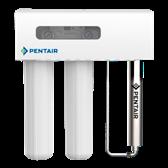
Visible pressure gauges remove the need to remove the cover to check
5 separate product certifications and licences.
Models:
UV55 - Small to Medium Households
UV75 - Medium to Large Households
The new Sanifos® 1300I packaged pumping station has been designed for medium-large residential or commercial use. The Sanifos 1300l inground tank is an efficient solution where gravity-reliant sewerage systems are not possible due to limited site access and site constraints, such as property sloping away from the sewer or infrastructure.
Why choose Sanifos 1300I?
Complete package ready to install
Includes dual pumps, internal pipework, non-return and ball valve

Energy saving and reduced motor wear due to large working volume and shared duty cycle

Ideal for larger single dwelling residential or commercial applications

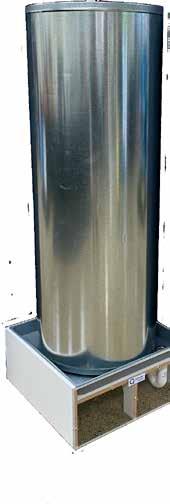
Tough robust cutter blade assembly
Compact space saving tank design
IP68 rated
Choice of optional inlet connection points
Intelligent controller with high level alarm
Working temperature of 70°C max for short periods.
View or download the product sheet and instruction file from the Saniflo Plumber Portal: www.saniflo.co.nz/plumberportal
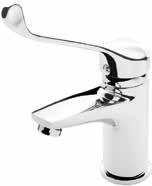
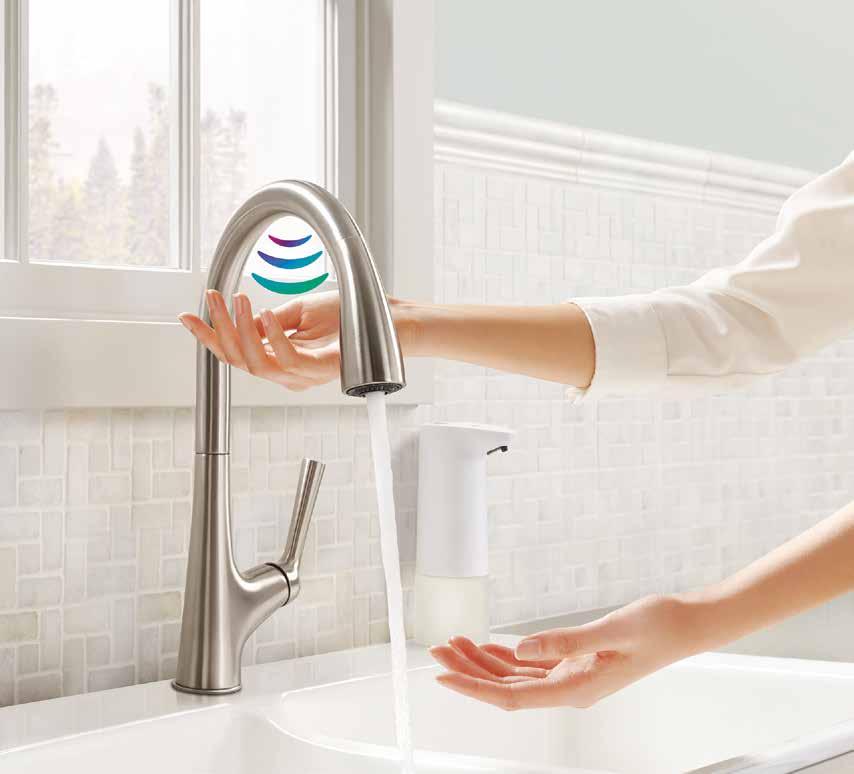

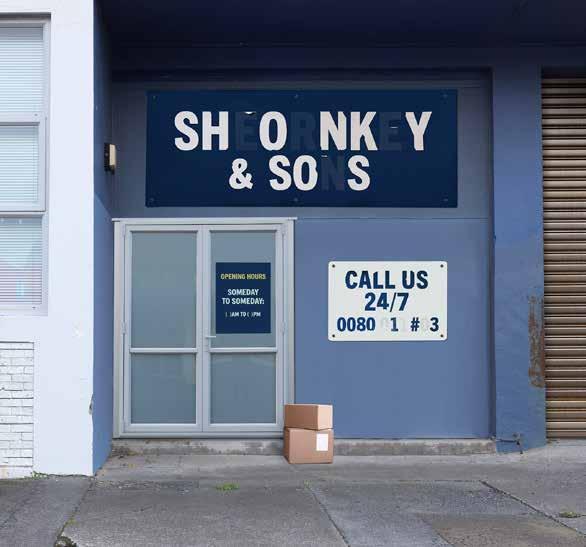
The NZBN is a unique business identifier, freely available to every Kiwi business—including sole traders (self-employed), partnerships and trusts.
The NZBN holds all your key business information in one place—legal name, trading name, addresses, contact information, and more. This means you don’t have to keep repeating yourself and updating details in multiple places.
Having this information added to your NZBN can help ensure that, when another New Zealand business is looking, all the information they may need about you is available in one place, making it easier for them to connect and transact with you. It’s free and fast to search for businesses on the NZBN register—and it can
help you to be sure the business you’re dealing with is real. This is because only authorised people in your business can populate and update your NZBN data.
Likewise, using an NZBN—especially if you’re a sole trader—gives you credibility and your customers confidence that your business is the one they intended to work with, and that the information you are using is up to date, and correct.
NZBN is increasingly being used by government and large corporates as their source of business data.
To learn how to use the NZBN in your business, to find your NZBN, or to apply for a new one, visit www.nzbn. govt.nz/using-the-nzbn/unlocking-better-business
We often hear from plumbers with great ideas for engaging their people. Here are 5 of the best to adopt in your business!
Investing in your people is crucial for business success. By taking time out of the business to focus on your people, you can reap the benefits of a happy, productive team.
1. Offsite activities
Organise offsite events to promote team bonding and regrouping. Engage in teambuilding exercises, outdoor activities, and personal development workshops. This time away from work allows employees to recharge, build relationships, and gain new perspectives—and is great for the soul!
2. Wellbeing programmes
Invest in wellbeing to show your commitment to physical and mental health. Encourage participation in yoga or meditation classes, fitness challenges, or consider funding gym memberships. These initiatives promote work-life balance, reduce stress, and enhance overall
wellbeing. Remind your people about the Master Plumbers Wellbeing on Tap resources to support employees facing personal challenges.
3. Voluntary and community engagement
Encourage team members to give back through volunteering. Participate in charity events or organise charitable activities. Collaborating for a common cause promotes unity, purpose, and a positive impact within and outside the workplace. It’s fantastic to see so many Master Plumbers member businesses getting involved in community events!
4. Team-building workshops
Run workshops to improve communication, problem-solving and collaboration skills. Invest in activities that build trust and teamwork. These workshops enhance interpersonal connections, improve collaboration, and create a supportive work environment.
Recognise and reward employees for their hard work. Implement employee recognition programmes or publicly acknowledge milestones and accomplishments. Celebrating success boosts morale and encourages camaraderie. By investing in your people’s wellbeing and prioritising team building, you foster collaboration, productivity and employee satisfaction. So, take the time to focus on your people, and the returns will be invaluable.
ABOUT THE AUTHOR: Lisa Duston from the Master Plumbers HR team is available to Master Plumbers members to discuss any employee situation. Contact Lisa on 021 245 1704 or email lduston@masterplumbers.org.nz
The workplace is an excellent environment to promote healthy habits, says Kelly Hyland.
I am really loving providing nutritional tips for NZ Plumber, though I will be the first to admit that reading an article every now and then rarely translates into new healthy habits.
Changing behaviour is no quick, easy task, but when a multi-level approach is taken, we have a higher chance of succeeding and maintaining new habits.
One well-researched method is called The Transtheoretical Model (TTM). TTM identifies six different stages of change we progress through and acknowledges we can re-visit previous stages without seeing this as a failure.
The workplace is an excellent supportive environment to promote healthy habits as

part of this multi-level approach. Benefits of a workplace wellness programme extend to both employees and employers.
For the employer, gains can be made from: Reduced absenteeism and workplace injuries and accidents

Increased productivity, loyalty and staff retention
A healthier, happier workforce.
I was curious to see how our staff are doing with their nutrition, and how we as a company could start supporting them. We did a quick survey at our toolbox meeting, and I was pleased to see good hydration habits, with most bringing a water bottle
to work and only a few consuming sugary drinks during work time.
However, many staff buy their breakfast or lunch—with bakeries, dairies, sushi and petrol stations being popular choices. Those who consistently buy their lunches are also less likely to eat fruit and vegetables at work. This could be our starting focus, with some small initiatives to help add a bit of colour into the workday diets.
I have a bit more research and planning before we are ready to put anything into practice, but I am excited to start looking at what we can do to initiate our own Workplace Wellness Programme.
ABOUT THE AUTHOR: Kelly Hyland (NZRD) is the General Manager at Alex Hyland Plumbing Ltd. She has a Masters in Dietetics and Graduate Diploma in Teaching. She is passionate about improving health and wellbeing in the trade industry.


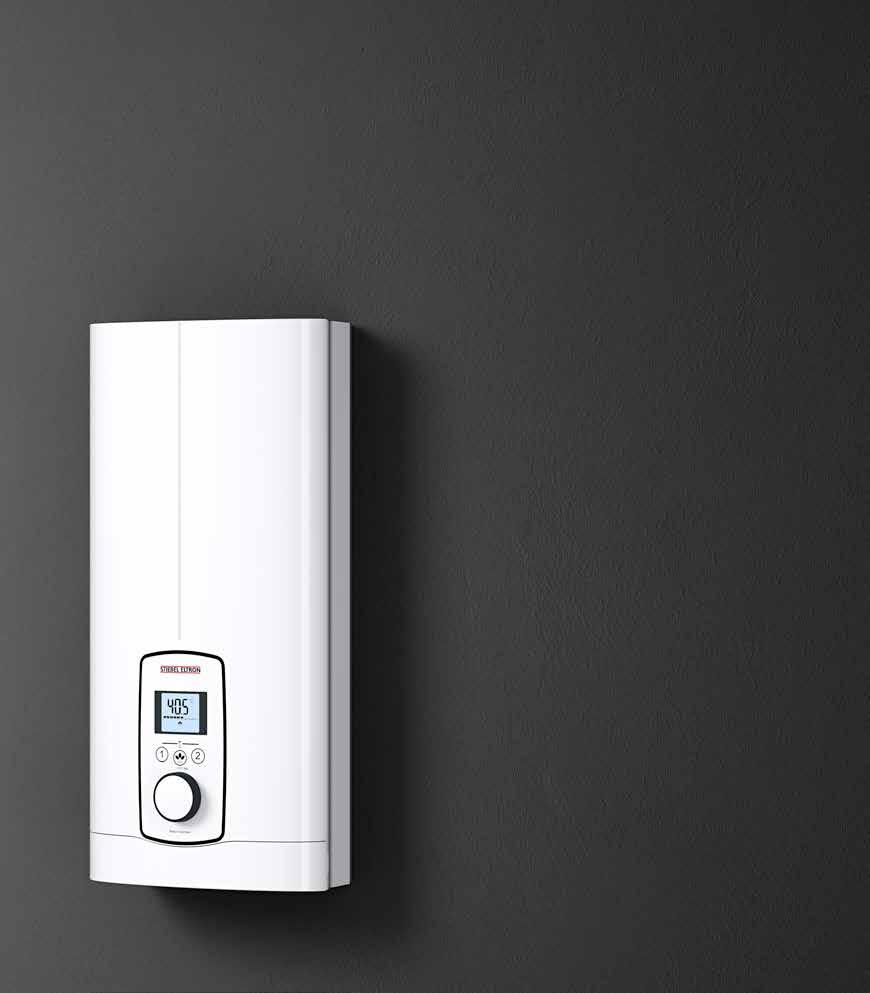
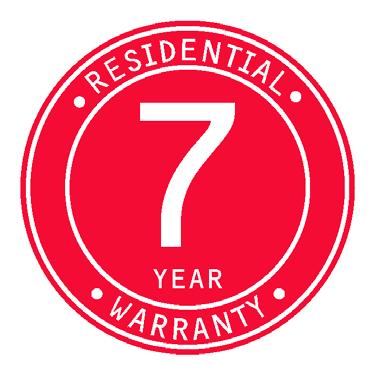
Do you ever work on your business from home? Or use your own car for business purposes?
Brett Crombie has advice for small business owners on maximising your tax deductions.
AUTHOR: BRETT CROMBIE, STRAIGHTEDGE ACCOUNTINGMaking sure your small business is claiming the maximum allowable tax deductions is a core component of longterm financial success. While most tax deductions are simply the business expenses that show on the bank statement, there are two significant ones which require calculation at the end of the tax year.
Owners of small businesses often use their personal vehicle for business purposes. This might happen even when you have a dedicated work vehicle. For example, you might use the family car to shoot across town to do a quote; or ask your spouse to drop you at the airport to fly to the NZ Plumbing Conference; or use the family car while the work vehicle is in getting repairs. Over the course of a year, this can add up to a fair bit of running around.
In my accounting practice, I’ve had quite a few clients say not to bother with this deduction as they hardly use their private vehicle. Yet when we look closely, it turns out they have used it a surprising amount.
Inland Revenue publishes the rate per kilometre that can be claimed for this type of vehicle use. For the tax year to 31 March 2023, this rate is 95 cents. So, if you tallied up 1,000km of business travel in the private car, your deduction would be $950. Depending on your tax rate, this is likely to result in a tax saving of a few hundred dollars.
The other significant expense that is sometimes overlooked is when home office space is used for the business. Unless you are leasing commercial premises, it is likely you have some space set aside at home where business administration and organisation is done. This could be a dedicated office or a desk in the
corner of the lounge. Many trade businesses running from home also commandeer the garage or workshop for storing tools and doing maintenance. This space can also be factored in.
From a tax point of view, the business is using things like rates, electricity, gas, insurance, phone and internet costs, which are all being paid for personally. Therefore, an adjustment is allowed to allocate some of the home cost to the business. There are a couple of ways to tackle the home office calculation. Generally, I find the simplest approach is the ‘square metre rate option’. With this approach, there is no need to keep detailed records of utility costs. Instead, Inland Revenue publishes an annual rate, which in the year to 31 March 2023 was $51.05 per square metre. This rate is then plugged into a formula, which factors in the percentage of the home that is
being used by the business, as well as the mortgage interest, rates or rent paid for the property.
Depending on the situation, it is not uncommon for a small business home office deduction to equate to a few thousand dollars—resulting in potential tax savings of several hundred dollars.

Small business owners who ensure their vehicle expenses and home office costs have been correctly accounted for will stand a good chance of making worthwhile tax savings. Certainly, a discussion with your accountant about these matters will be time well spent.
ABOUT THE AUTHOR: Brett Crombie is a trade specialist accountant at Straightedge Accounting. For assistance developing a business plan, or for tax and accounting services, contact Brett on 021 301 022 or email brett.crombie@straightedge.nz

You probably put a lot of effort into and emphasis on your business branding, but what about your personal brand? Business owners and their personal brands go hand in hand. As one of the key players in a business, especially smaller ones, owners can do a lot to shape the way their business is seen.
Whether you intend for it to or not, your personal brand exists. If you want to be in control of what you’re known for and the future of your business, strong personal branding is extremely important, no matter what industry you are in.
What’s in it for me?
Reputation is one of the things a business owner has direct influence over. A solid reputation opens your business up to so many more opportunities because people want to work with you, for you, or have you work for them.
Personal branding can be immensely helpful in building your reputation, whether
it be positioning yourself as an industry leader or bringing more personality to your business. Building your personal brand is all about showcasing who you are, what you’re about and helping you to connect with others—a great way to make you and your business stand out from the rest.
How do I build my personal brand?!

What’s your why?
What do you stand for, what makes you unique? Consider things like your values, strengths, and goals.
Pick your niche and market
Don’t try to be a jack-of-all-trades. You need to speak to a specific audience. Hone in on areas you are particularly knowledgeable and passionate about. It could be the business side of things, leadership, or the hands-on part of the job.
Build your brand identity
This is where the help of a professional comes in handy. You want to present
a cohesive brand through visuals like imagery and graphic design as well as your voice. What you say and how you say it are just as important.
How do I gain a loyal following for my personal brand?
From experience, there are two key things that make a huge difference when it comes to successful personal branding.
Offer your audience value
Share something that educates, entertains or inspires your audience. For example, a story about your personal experience on a topic, so people get to know you better. Be sure to include clear takeaways that keep them coming back for more.
Give something to get something Engage with others in your industry, respond to comments, leave comments, and utilise stories. Having a network of other professionals, existing and potential clients will come in very handy when growing your business. Relationships are the fuel for personal branding success. Personal branding doesn’t happen overnight, but the results speak for themselves. If you’re looking for assistance in building your personal brand, talk to us at marketing@sidekit.nz
If you’re looking for assistance in building your personal brand, talk to us marketing@sidekit.nz
SideKit is a virtual marketing management and assistance business, supporting businesses across NZ.



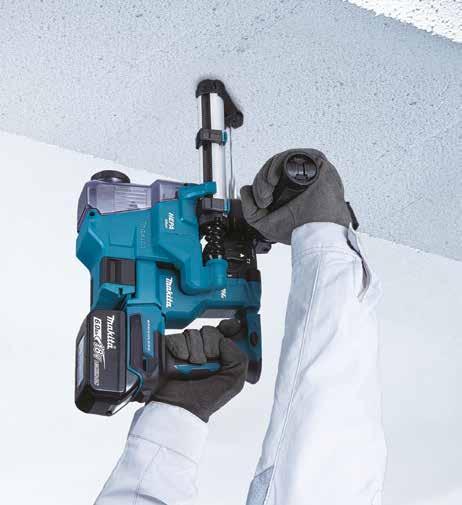
This is where EarnLearn | Te Pūkenga Account Managers can help. Your account manager is responsible for supporting apprentices and learners as they progress through their training.
Did you know that some of the EarnLearn | Te Pūkenga Account Managers come from within the plumbing industry themselves? They’ve often made the move to become an account manager to give something back to the sector and to pass on their own expertise to the next generation of plumbing apprentices and trainees.
A large part of an account manager’s role is to work closely with employers. They are a clear point of contact if you have questions about your learners, or training in general. They can tell you about all the training and apprenticeship options that may be relevant for the different people on your team. They’ll
ensure relevant on-job and off-job apprenticeship training meets your learners needs and that MOE, NZQA and TEC requirements are being met. They’ll also work with you to make sure your staff have a productive learning environment, both physically and mentally.

If you would like to talk to EarnLearn | Te Pūkenga about supporting your staff through training, contact the team on 0800 327 648 (0800 EARN IT)

As an employer, investing in the skills and professional development of your people is vital to the growth of your business. But you also want to be confident that the investment is going to pay off.

For third year Masterlink apprentice Emma de Salis, plumbing isn’t her first career. The 34-year-old started out in property maintenance and management and worked with different trades. She found plumbing interested her and decided on the new direction.
But it wasn’t easy for Emma to get an apprenticeship. She called local plumbers and there was nothing going. She also faced resistance being female.
Comments like, “Are you looking for a job for your boyfriend?” didn’t put her off though, and a chat with Taupō-based McBeth Plumbing & Gas ended with them keeping in touch.
“I called them every six months and, when they needed an apprentice, they gave Masterlink a call.”
Emma appreciates the supportive team at McBeth. It’s a learning curve as an apprentice but the guys are approachable and have her back.
As a Masterlink apprentice Emma has a dedicated mentor in Russell Walsh. He provides support and keeps her accountable with study.

Emma attended the New Zealand Plumbing Awards in May as one of three Masterlink apprentices to receive a 2023 Plumbing World Scholarship; secured one of 10 Masterlink scholarships for a 1-day Outward Bound Leadership course in June; and headed to the National Association of Women in Construction (NAWIC) Awards in Christchurch as a finalist for the Apprentice Excellence Award in July. She also won Best Second Year Apprentice at the Master Plumbers Volcanic Plateau Awards last year.
The on-job, off-job learning combo has been good for Emma. She has the added challenge of ADHD so how well she learns can depend on her tutor. She’s just finished her first gas course and says, “The tutor was really engaging… we learned so much.”
Award-winning adult apprentice Emma de Salis is enjoying every minute of being in the plumbing industry. NZ Plumber talks to Emma about her achievements and the added challenge of working and learning with ADHD.AUTHOR: DAWN ADAMS PHOTOGRAPHY: AMY FOWLER
Emma’s experience means she mostly works unsupervised so her on-job learning is often self-directed. She says she feels proud of that and glad the bosses have faith in her.
Masterlink mentor Russell adds, “The hard thing for Emma has been the pace of the training holding her back. She’s champing at the bit to get ahead but has needed to go at the pace dictated by the apprenticeship.”
Recently Emma and the McBeth team helped rebuild Taupō’s storm-damaged Tauhara College. “It was really cool dropping pre-made classrooms in place and having to sort those out.” She enjoys reno work, too—learning plastering and tiling along the way.

The team also donated time to constructing off-grid shower units for Hawke’s Bay residents after Cyclone Gabrielle.
On the tools Emma likes a challenge. “If there’s a job where there’s a strange leak… and you’ve got to spend time investigating—it’s cool to put all your knowledge together and solve it.”
Being a woman tradie hasn’t given Emma any problems. If anything, she’s found more upsides with support and events for women in trades.
She thinks flexibility for parents could improve, though. Acknowledging it’s tough for small businesses, she says, “There’s women out there saying, ‘I’d love to be in the trades, but I’ve got to drop my kid off at 8.30 and everyone starts at 7.30.’”
A highlight for Emma was the 2023 New Zealand Plumbing Conference. During the event, Emma participated in the Women and Diversity Panel, where she discussed being a woman in the trades and her ADHD challenges. “It was inspiring being part of those discussion panels... to see what the future of the industry holds,” she says.
A common view held by panellists was that you don’t have to cater for diversity in the workplace if you have a good workplace culture—because if you’re caring for your people you’re caring for diversity.
Outside work Emma is a volunteer firefighter and enjoys mountain biking with her Ironman wife Tabitha.
Emma was diagnosed with ADHD twoand-a-half years ago. She says it makes her thinking “scattered” and she has to try hard to stay focused.
Recognising how it presents and finding strategies that work helps. She makes lists and tries to keep a clear workspace to support a clear mindset. For Emma, direct communication is best—interruptions are difficult. Instead of calls when she’s on site, McBeth bosses leave notes back at base.
With study she says, “Russell told me to study for my exams early.” That’s helped
too—and taking her laptop outside keeps study novel.
When sorting jobs for the day she sits with her boss and draws a plan. “Then I’ve got something to take away.”
Another simple strategy Emma uses is taking five minutes to read her paperwork and think through a job before she starts.
For anyone with ADHD considering a trade she says, “It’s rewarding work.” Each task she ticks off gives Emma a dopamine hit which keeps her motivated throughout the day.
“You don’t have to cater for diversity in the workplace if you have a good workplace culture— because if you’re caring for your people you’re caring for diversity.”Emma loves the problem-solving aspect of being on the tools.

At Rinnai, we’re constantly thinking of ways to improve our products. Which is why we’ve transformed our ever-popular Rinnai INFINITY® A26 Graphite™ continuous flow hot water system. This new graphite coloured option has been specially designed to blend in with the darker exteriors of today’s homes, all while allowing your client to enjoy the benefits of endless hot water. For a home your clients would love to live in, turn to www.rinnai.co.nz/graphite
Your experts in total home living.

In its first 18 months, and by engaging closely with the construction industry, Waihanga Ara Rau Workforce Development Council has achieved a great deal towards maintaining a pipeline of skilled workers, says Chief Executive Philip Aldridge in this progress report.
AUTHOR: PHILIP ALDRIDGEWith 2023 past the halfway mark, I am reflecting on what Waihanga Ara Rau has achieved in what can only be described as changing times both for the industry and vocational education.
Waihanga Ara Rau, the Workforce and Development Council (WDC) for Construction and Infrastructure was established in October 2021. I am pleased to report on our progress and engagement with you. Much of our first year was about getting our systems set up, our people on board, our culture embedded and establishing relationships with you, our industry. We have achieved that and so much more as we round out our second year of operation.
Now we are focused on providing skills leadership on behalf of industry and reinforcing the following key outcomes over the next 18 months:
We have quality relationships with industry and productive partnerships with Regional Skills Leadership Groups (RSLGs), Construction Sector Accord, ConCove, industry associations, iwi, hapū and education providers
Industry understands the role of Waihanga Ara Rau and how to leverage the organisation
Qualifications system products are informed by industry needs. Assurance practices and programmes support national consistency and quality learning outcomes

Relationships with Māori support greater awareness of career opportunities in our industries and opportunities to train at all levels.
We could not do all this without your support and genuinely thank you for your input and feedback.



Skills shortages in construction and infrastructure do not appear to be diminishing any time soon. We have record employment across the economy and the shortages are similar in other countries. Many countries are all competing for the same workers. We also have a declining birth rate and an ageing population. The combination of these factors is a perfect storm putting pressure on the sector to maintain a pipeline of skilled workers. Together, we need to make sure that workplaces and communities are attractive and welcoming in this new world of work, particularly if migrants are going to help at all.
Also adding pressure are adverse weather events which add to the volume of work immensely. While evaluation is ongoing, early predictions after the recent cyclone and flood events are that the repair and rebuilding expenses will amount to approximately $6.3 billion.
For many construction businesses, the last two years have been a frustrating cocktail of lockdowns, other project delays, labour and skill shortages, capacity constraints, disrupted supply chains, materials shortages, and sharply rising costs.
The boom-bust-cycle nature of the construction industry means that businesses are more susceptible to cashflow issues. As a result,







ready before they are hired. If newcomers understand what to expect on the job and have already developed a keen interest in the type of work they will be doing and what they will be learning, then it becomes highly likely they will be content and stay in the sector. Getting some elementary skills on board before entering the industry also helps. This is where trade academies and work preparation courses can fit in.
We also need to raise aspirations and narrow the skills and diversity gap. To achieve this, we will need to disrupt the way that companies engage with the pipeline of talent and provide people with the tools to challenge stereotypes.
What we keep hearing from employers is that they cannot find the right people to hire. This signals that we must help a wide range of people get ready for the industry and support them to become the right people to hire by shining a light on the future world of work. We need to do this together by making sure the construction and infrastructure sector are an attractive proposition with genuine career prospects and opportunities for everyone to succeed.
Attracting more ākonga (students), rangatahi (young adults) and pakeke (career changers) to the industry and into vocational education programmes will take a team effort by industry, industry associations, education providers, government ministries/ organisations, including Waihanga Ara Rau, and schools.
“Early predictions after the recent cyclone and flood events are that the repair and rebuilding expenses will amount to approximately $6.3 billion.”
The retention of skilled workers in construction and infrastructure is indeed a challenge. Waihanga Ara Rau is committed to helping industry address this issue. One key approach is to foster supportive and inclusive work environments. By supporting developing leaders, cultural competency and the wellbeing and safety of employees, employers can build culture, diversity, reduce burnout and promote positive work-life balance.
Offering opportunities for career advancement is another strategy that can be employed. By investing in the growth and development of skilled workers through higher-level training, business owners can aim to enhance job satisfaction which in turn increases commitment. Businesses should strive to create work environments that not only attract skilled workers but also motivate them to build long-term careers.
No matter where a learner is based, whom they work for, or how or where they learn, every learner achieving the same qualification should gain the same skills and knowledge. The time it takes to become qualified should be consistent as well as assessment decisions. This is one of the main goals of the reform of vocational education and our assurance team is working in close partnership with industry, vocational education providers and schools to achieve this goal.
Waihanga Ara Rau is responsible for the lifecycle of 149 qualifications, and 2,822 unit standards across 57 industries in the construction and infrastructure sector. We have embraced this huge

programme of work to make sure all qualifications remain relevant and meet industry needs. With the help of industry, we have improved the relevance of more than 1,200 standards and over 40 qualifications in the first 18 months of our operation.
We are also focused on helping the industry prepare for the future and recognising emerging skill requirements across our sector. We are working on creating new qualifications and standards for industry groups where no qualifications have previously existed, including Site Traffic Systems Management and Underground Utility Location.
We have built strong connections with industry groups and other WDCs. We have worked with industry to develop Workforce Development Strategies that provide a 5 to 10-year view of workforce requirements and to ensure industry qualifications and skills standards are relevant, readily accessible and support improved outcomes for learners and employers. We have initiated contact, started relationship building and are getting to know you, our stakeholders. Our focus is to make sure your interests are well represented, build your trust and confidence in what we do, share our findings, and support many industry initiatives.
We have engaged with a range of diverse groups and individuals from across the sector, including industry peak bodies and other sector-representative groups, kaimahi (employees) and employers, RSLGs, providers, government agencies, and wānanga.
Only in partnership with industry can Waihanga Ara Rau support education providers and employers who train to produce people with the right skills and enable people from all walks of life to have rewarding careers in our sector.
There is no switch to turn on that will deliver many thousands of new people into the workforce overnight. We are pleased that the Apprenticeship Boost initiative has been extended until the end of 2024. This support will help, but many more newcomers are needed to meet the current and planned project pipeline in the next three years. The things we can do are provide industry with the facts, strategies and competency frameworks that will help achieve the most successful outcomes possible.
We will advocate for you with government and other agencies so that your voice is heard to ensure vocational education is funded in a way that best meets the needs of the industry. We will help you look after your people with the resources and tools you need to support wellbeing and, together, we can make change happen.
We are practical, industry-focused and energised by your support and engagement. Your input into our mahi and your feedback is so important to make sure we are delivering exactly what you need. Get in touch, we look forward to hearing from you.
ABOUT THE AUTHOR: Philip Aldridge is Chief Executive of Waihanga Ara Rau, Construction and Infrastructure Workforce Development Council (WDC). Waihanga Ara Rau works with the plumbing, gasfitting and drainlaying industry and employers to develop and maintain a strategic view of the skills needed by our industry. It also sets unit standards, develops qualifications and helps shape the training curriculum.
“Businesses should strive to create work environments that not only attract skilled workers but also motivate them to build long-term careers.”

for first dibs to book your spot for FREE face-to-face product training in your area

20 year warranty on cistern and pan. 2 year replacement on seat
Oscillating & pulsating spray functions
Heated seat
Auto open and close lid

Self-cleaning extendable spray nozzle with drying function
Water flow & temperature control
Quick release, soft close seat
Rear and front washing
LED glow for night-time use
Enhanced hygiene all controlled by an intuitive remote control
Available in close couple
BI/BE (848710W/848711W) and wall faced (848610W) for

Stormwater pipes are thick, heavy and physically demanding to work with. Sebastian knows this only too well, having recently been working on the external drainage at four different classroom block projects around Auckland.

All are at the early build stage and Sebastian admits bouncing around
between jobs can be a challenge, when all have their own set of plans to get familiar with. “You can’t go into autopilot, that’s for sure,” he says.
There’s plenty to do on the two-storey blocks, including internal PVC waste pipes and, later in the piece, bathrooms plus kitchen facilities for the teaching staff.
Heron Plumbing Contract Manager Tom Poole manages all the project scheduling, liaising with the project managers on each school site and sending Sebastian where needed.
“I’m usually on a site for three days at a time,” says Sebastian. “I’m on my own for 90% of the time, which means I can go at my own pace. If I get overwhelmed by a task, I take five to chill out and mostly come up with a good solution. I always remember what my first boss used to say: ‘Insanity is doing the same thing over and over and expecting different results.’
“Sometimes I get tunnel vision and have to ask myself, ‘OK, what can I do differently?’”
Health and safety on site is a key part of each project, and Tom always goes on site before work starts to establish the ‘triple S’ (site specific safety) plan, which Sebastian must read and sign up to.
Then there’s the weekly toolbox talk by email or phone to discuss particular on-site hazards and how to minimise or work around them. In recent months, one of those hazards has been poor lighting due to the dark winter mornings. There’s also been working at height off a ladder plus the open trenches and diggers for the external drainage.
“Uneven surfaces are another, as the sites are all dirt at this stage,” says Sebastian. “The apprentice I was working with one day rolled her ankle just as I was in the site office talking with the manager about the plans. She was all good, but it was sore at the time.”
Sometimes there are other, more unexpected hazards. “Last week, I was doing some flood testing on PVC work I’d just finished on the first storey of one of the school blocks,” recalls Sebastian. “It was taking ages for the water to drain, so I thought I’d be a tidy Kiwi and go downstairs to clean up while I waited. I was packing up my gear when all the water flowed out of the pipe onto the exact spot I was standing. I was drenched—a great way to end the day!”
In our latest catch up with plumbing apprentice Sebastian Sekene, we learn that it’s all go on new classroom block projects.Sebastian is a 22-year old fourth-year Masterlink apprentice, hosted by Heron Plumbing in Auckland. Sebastian at one of the new school block projects, showing the ropes to new Masterlink first-year apprentice Lennox Tomes, also hosted by Heron Plumbing.
The Iplex Rainwater™ Systems unique fitting range with rubber ring joint design offers a simple clip in solution reducing assembly time and the need for solvent cement jointing of the spouting profiles.
1 Easy Installation
Stainless Steel Drainage Solutions for Commercial Kitchens and Food & Beverage Production Facilities.


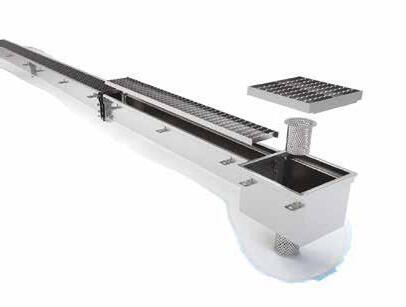

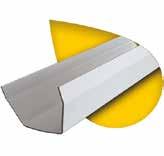
2 Easy Cleaning
3 Easy Repairs & Maintenance
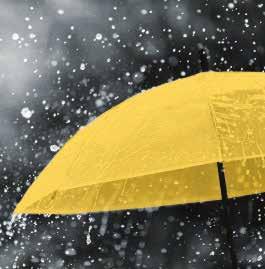
4 BRANZ Appraised
5 15 Year Product Warranty
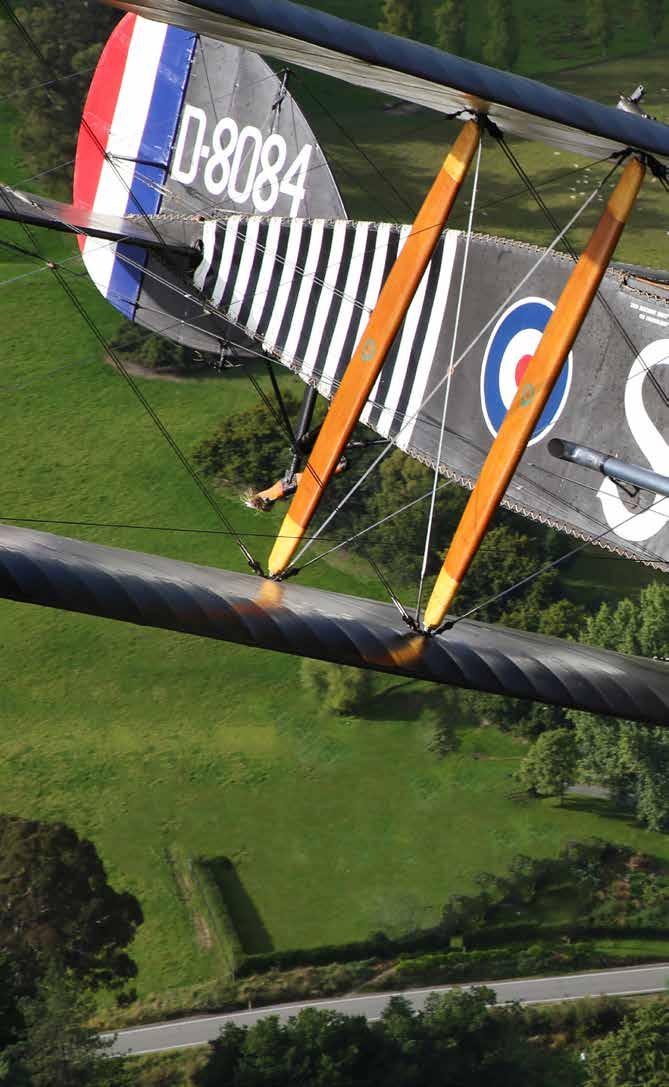

I’m a second-generation plumber and drainlayer and have owned my own plumbing business for 33 years. My son Cameron also completed his plumbing apprenticeship through our business with Masterlink. Our property was initially cut off following Cyclone Gabrielle and two of my colleagues, Paul and Murray, rolled up and helped the first day our road reopened. It was great to get some help from them and from the Master Plumbers Hawke’s Bay Branch, who sent us off to my first NZ Plumbing Conference.
It really started in Pahiatua, where I was born. There was an original WWII Harvard Air Trainer displayed in the centre of town, complete with ladder and slide and nearby anti-aircraft gun for the baddies to shoot you down. My Uncle Peter was an armourer in the RNZAF, loading F4U-1 Corsairs in the Pacific Theatre, and I decided to build some of the aircraft he’d worked on after looking through his photo album. Interesting fact: name an aircraft from WWII and I’ll find a Kiwi that flew it!
We understand you make model planes—what’s the process? It simply requires hours of painting, gluing, sanding, filling, weathering, decaling etc. Most of the materials can be bought from a well-stocked hobby store. I also buy materials online, as I like to apply aftermarket decals, so the models have some connection
with New Zealand. Most of the planes I’ve built have historically been flown by New Zealanders. I usually make 1:32 or 1:48 scale models, and it can take between 40 to 80 hours to put one plane together. You do need some artistic talent—adding chips and fading to lightly weather the planes can get finnicky.
How’s the collection looking at the moment?
We used to have a lovely display cabinet at our old house, with lights and a mirror that held most of the models, but when we moved into our new house, it got trashed and all the models are now being kept in a dark cupboard while we renovate! I’m not sure exactly how many models I’ve built, but you could say that I have a healthy stash—and it’ll continue to grow.
What are some of the highlights of your interest?
Building a connection with fellow modellers has been hugely valuable. I’ve recently joined The Vintage Aviator Ltd, a volunteer group based at Hood Aerodrome in Masterton that operates WWI aircraft owned by Sir Peter Jackson.
His private collection contains originals, reproductions and replicas of flying WWI aircraft and is one of the largest in the world. The craftsmanship and attention to detail is stunning and it’s without doubt a privilege to be involved in “the world’s most exclusive flying club”—but then they’re lucky to have a Master Plumber on the team!













Thanks to Jonathan Hutchison for sending in this beauty. “Called to a job for a leak under the kitchen sink.”
“One of our staff noticed this lovely piece of work, undertaken by a local council contractor for our client,” says Chris Downey of Tuffnell Plumbing Drainage & Gas. “This was to try and stop water coming back up through the floor drain (installed in a basement). As you can see, it’s a sub-par installation, with Hansen fittings connected to PVC pipe with thread tape, and a major tripping hazard. Good grief!”
Multiple areas of non-compliance with AS/NZS 5601:1 at a new Christchurch restaurant, says Marshall Weenink of Gas Engineering Services of this photo.

NZS 5601:1
6.6.3 Means of isolation table 6.4 –Cooking appliances in commercial applications require a means of manual isolation
5.9.4 Hose assembly – prohibited installation methods – through the panel or casing of the appliance (saddle clip)
5.9.5 Hose assembly – Operating conditions (b) subject to strain, abrasion, kinking or permanent deformation (saddle clip)
5.9.7 Hose assembly connecting an appliance (a) be connected permanently to the appliance and have a manual shut-off valve and union fitted at the end of the hose assembly (no isolation valves fitted)
6.10.1.9 Freestanding cooker connection should be high level
• Connected by a hose assembly between 1m and 1.2m long
• Connected to elbows facing down 150mm apart (so the hose loops down and back up)
• Restrained by a wire or chain within 50mm of the connection point and a maximum 80% of the hose length
6.10.1.10 A freestanding cooker with an under-cooker connection shall not be connected to that point using a hose assembly
6.2.14 Gas appliance restraint where a hose assembly is used – Restraint should be no more than 80% of the length of the hose assembly (not chained together)
Hose manufacturer’s specification –Convoluted SS hoses not designed for appliances that may be moved regularly, eg for cleaning etc.

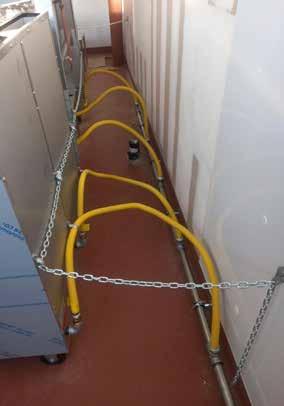
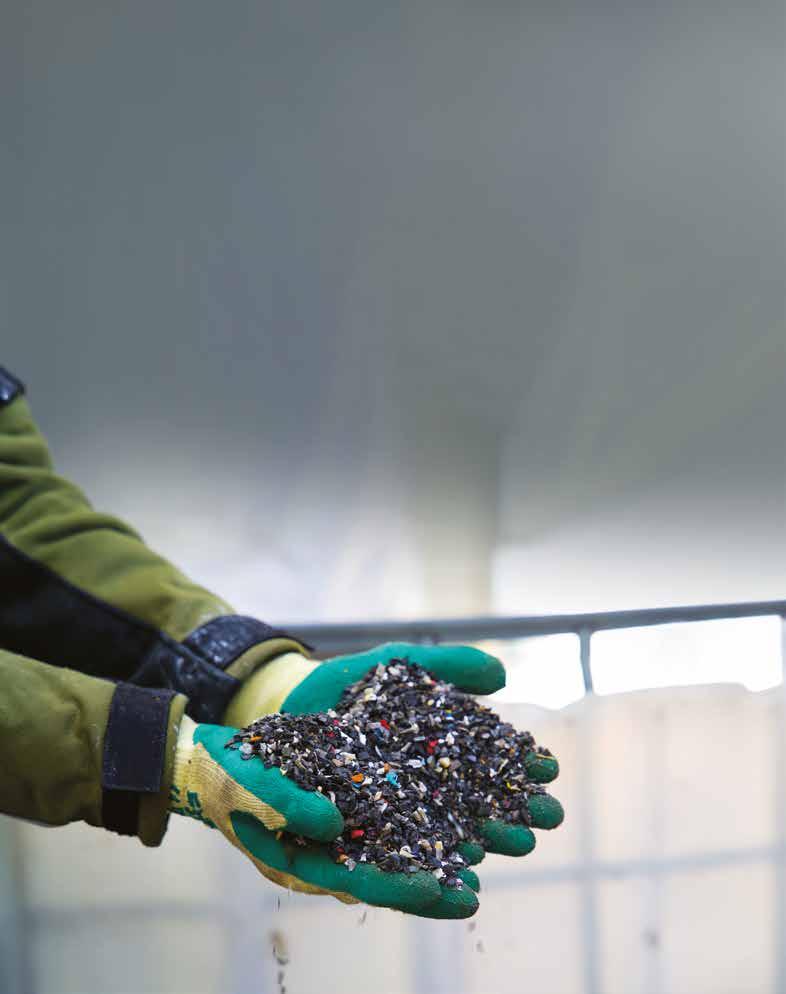
Grab a FREE AdjustaPit® BASIC 250 and take your next pit installation to new heights. Scan the QR Code to secure your FREE sample!

AdjustaPit® is New Zealand’s ORIGINAL height adjustable silt pit. With 4 pits to choose from, including our code-compliant AdjustaPit® 350, a choice of square or round tops and iron or aluminium grates, pick the pit that suits your needs.
